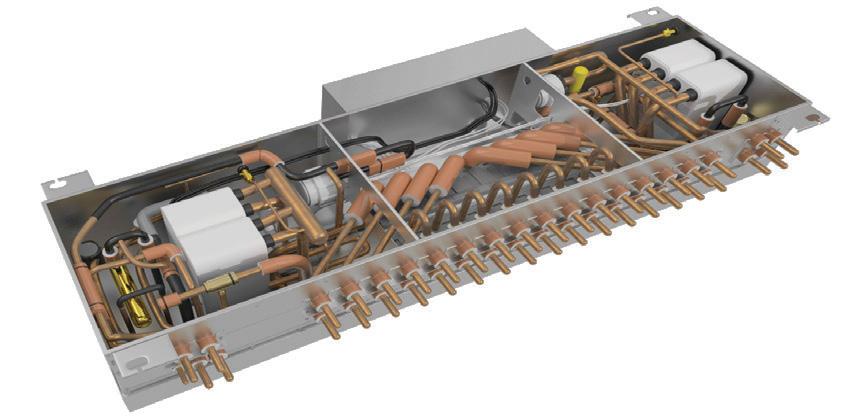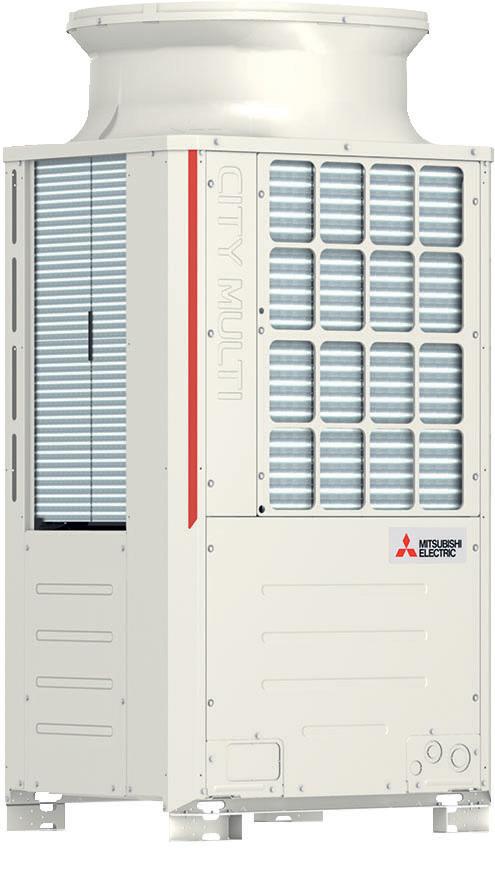compromise WATER SECURITY without
Unveiling The Department of Water and Sanitation’s bold wastewater strategy




GLOBAL TREATY PARTICIPATION


Unveiling The Department of Water and Sanitation’s bold wastewater strategy




GLOBAL TREATY PARTICIPATION

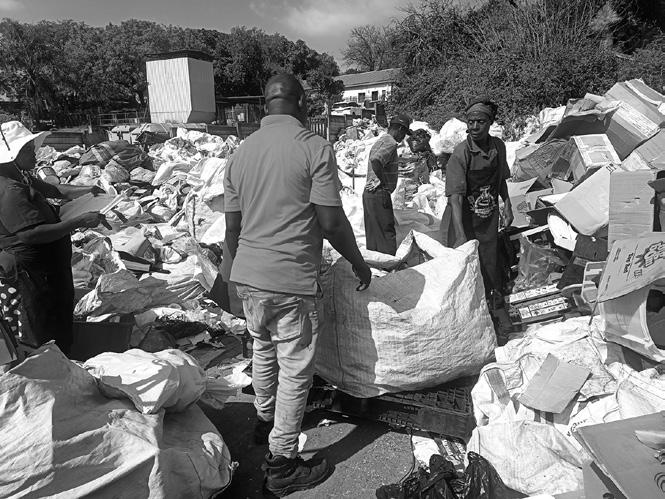
CIRCULARITY WASTE BENEFICIATION CENTRE ESTABLISHMENT
Plastics|SA is dedicated to driving positive change, advancing sustainability, and fostering a circular economy for the benefit of current and future generations.
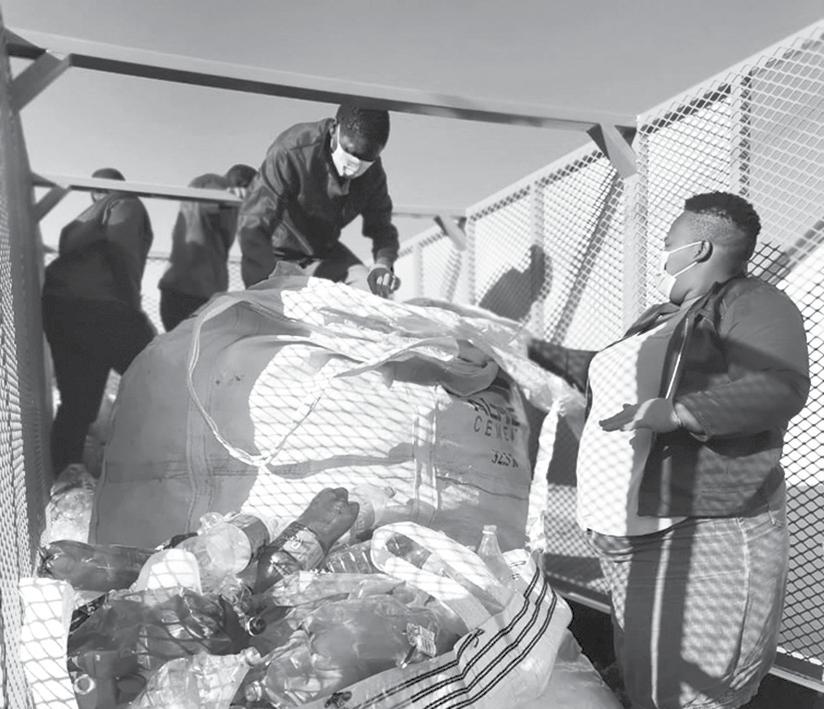
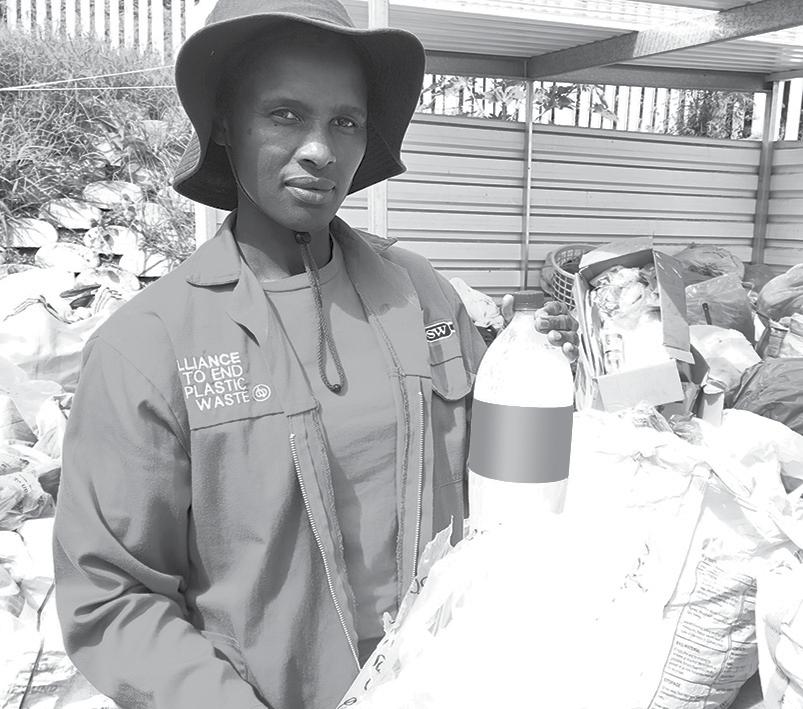
CLEAN-UP AND RECYCLE CAMPAIGN 2024

SAVE A FISHIE SPONSORSHIP RIVER CATCHMENT PROJECTS
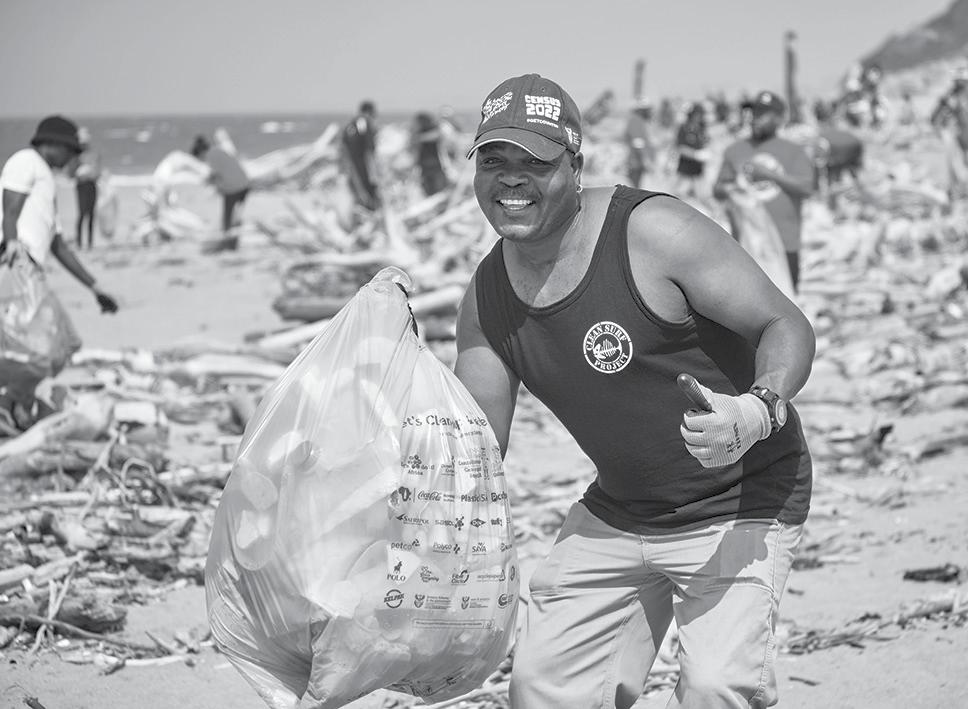
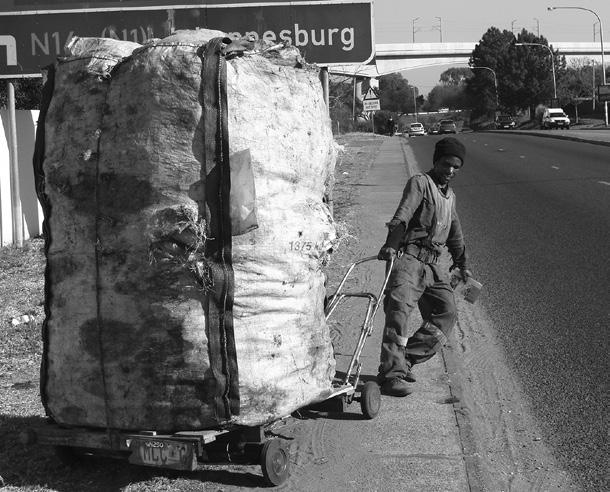
WASTEPICKER TRAINING ZERO WASTE TO LANDFILL
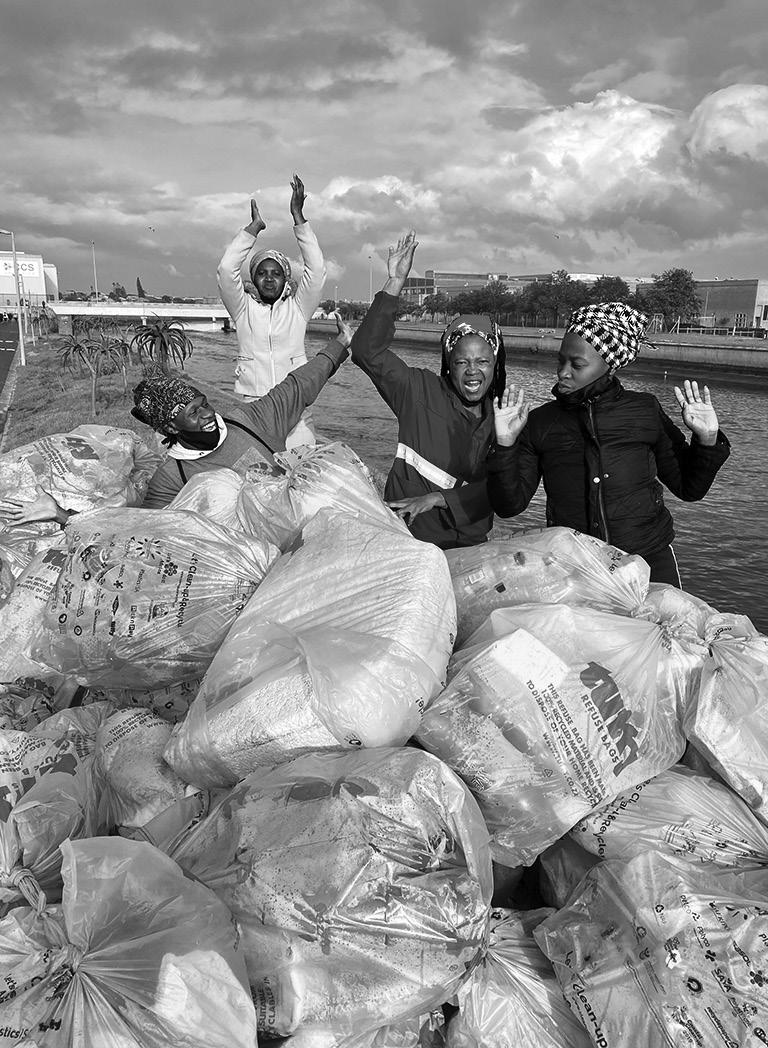
JOB CREATION FOR YOUTH AND WOMEN

Welcome to the 11th edition of Green Agenda for 2025. One of the topics we’re focusing on is wastewater management, which is key to water security: a pillar of human dignity, environmental sustainability, and inclusive economic growth. Entrusted with discharging this responsibility, the Department of Water and Sanitation (DWS) recently announced unveiled a bold, urgent strategy focused on taking the necessary actions – without compromise. In the words of Minister Pemmy Majodina, “We cannot talk about human rights and economic development without talking about water.”
It’s particularly encouraging to note the emphasis placed on publicprivate partnerships in unlocking capital, skills, and innovation. To help companies best position themselves for meaningful participation, we explore how consumers and companies can implement water conservation strategies, the efficient use of water resources, and innovative technologies.
April was Earth Month, promoted as a time to celebrate our planet and take action to protect it. At Green Agenda, we believe that every month should be an Earth Month. As a result, we are highlighting eco-friendly practices, sustainable living, and climate change mitigation strategies, not to mention innovative solutions, success stories, and industry trends. When it comes to paper and packaging and sustainability, the industry is well served by producer responsibility organisation Fibre Circle. Read up about this organisation’s ever-evolving projects and programmes in our interview with CEO Edith Leeuta.
A topic less spoken about is trends in metal packaging and sustainability. To make a durable choice for a greener future, sustainability can no longer be treated as a buzzword. Consumers are demanding eco-friendly products and governments are pushing for greener policies, placing businesses under increasing pressure to adopt sustainable practices. One of the unsung heroes in this movement is metal packaging. Discover the vital role that this durable, infinitely recyclable, and adaptable packaging type is playing a vital role shaping a sustainable future.
GREG PENFOLD | EDITOR
EDITORIAL
DIRECTOR Royston Lamond
EDITOR Greg Penfold
DIRECTOR Thandiswa Mbijane
AND LAYOUT Raw Art
COORDINATOR Shejali Kandhai
COORDINATOR Yazied Davids

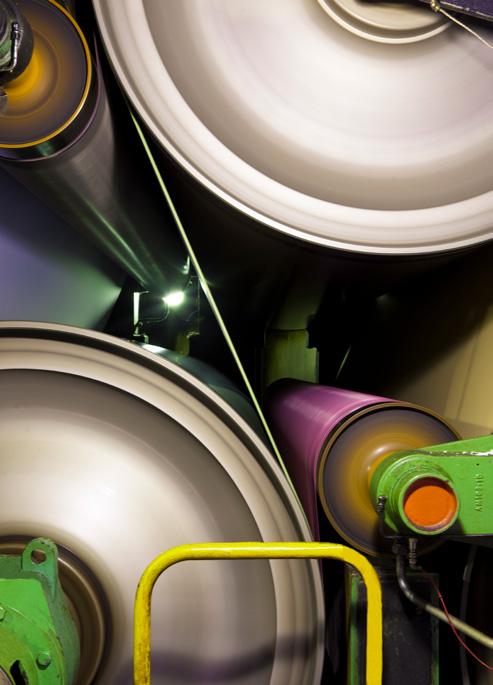
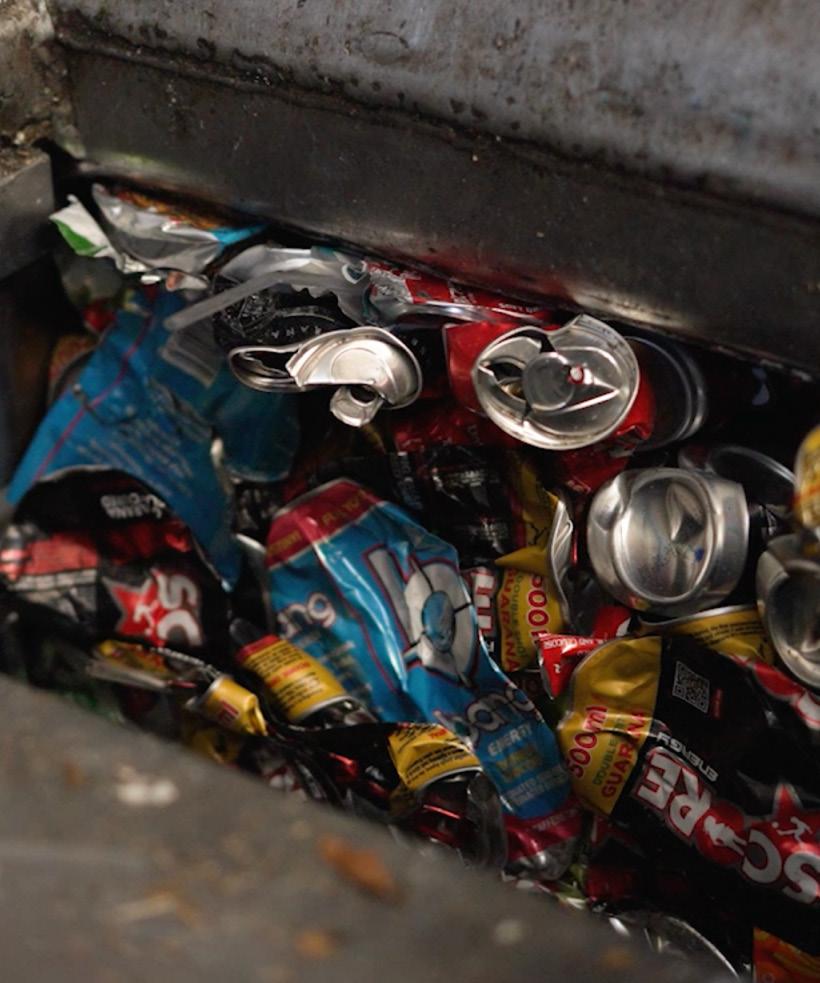
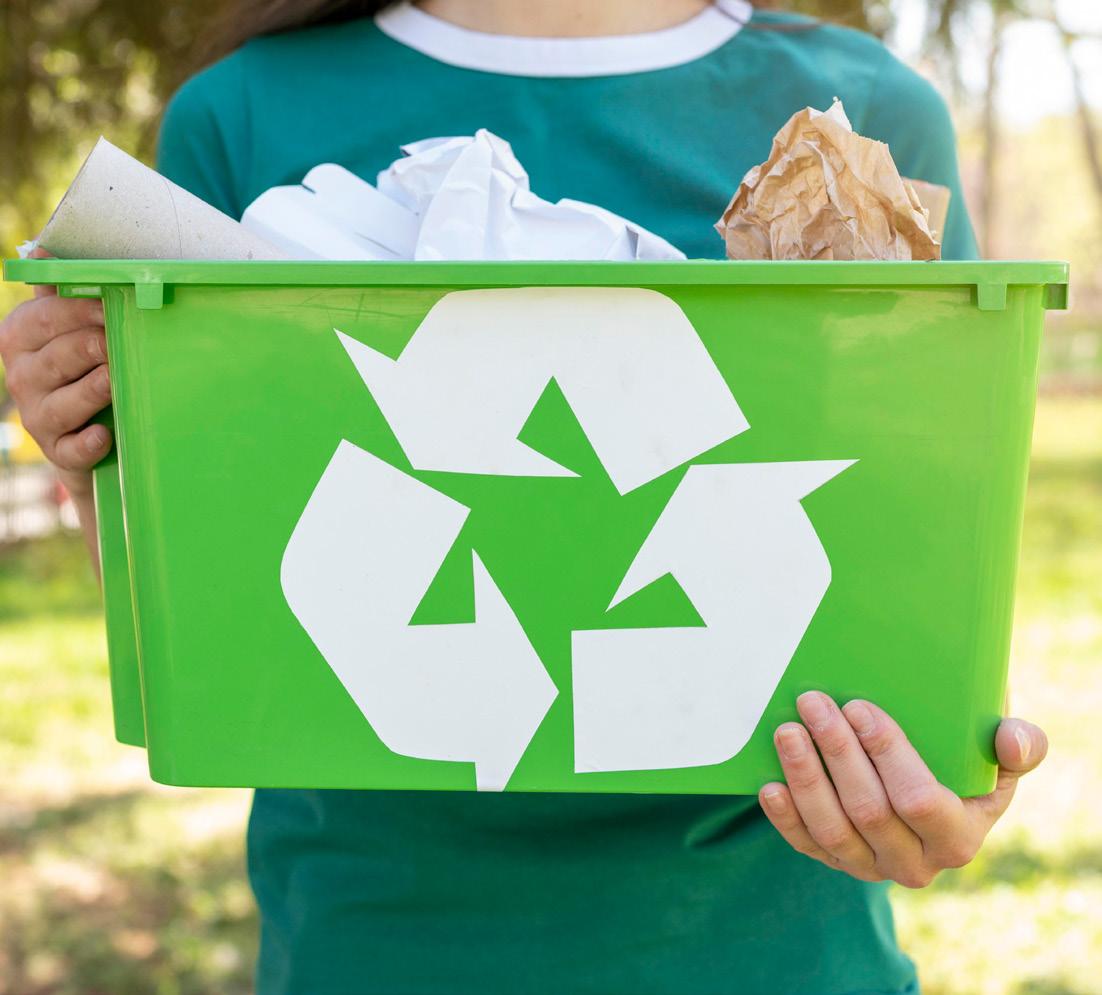

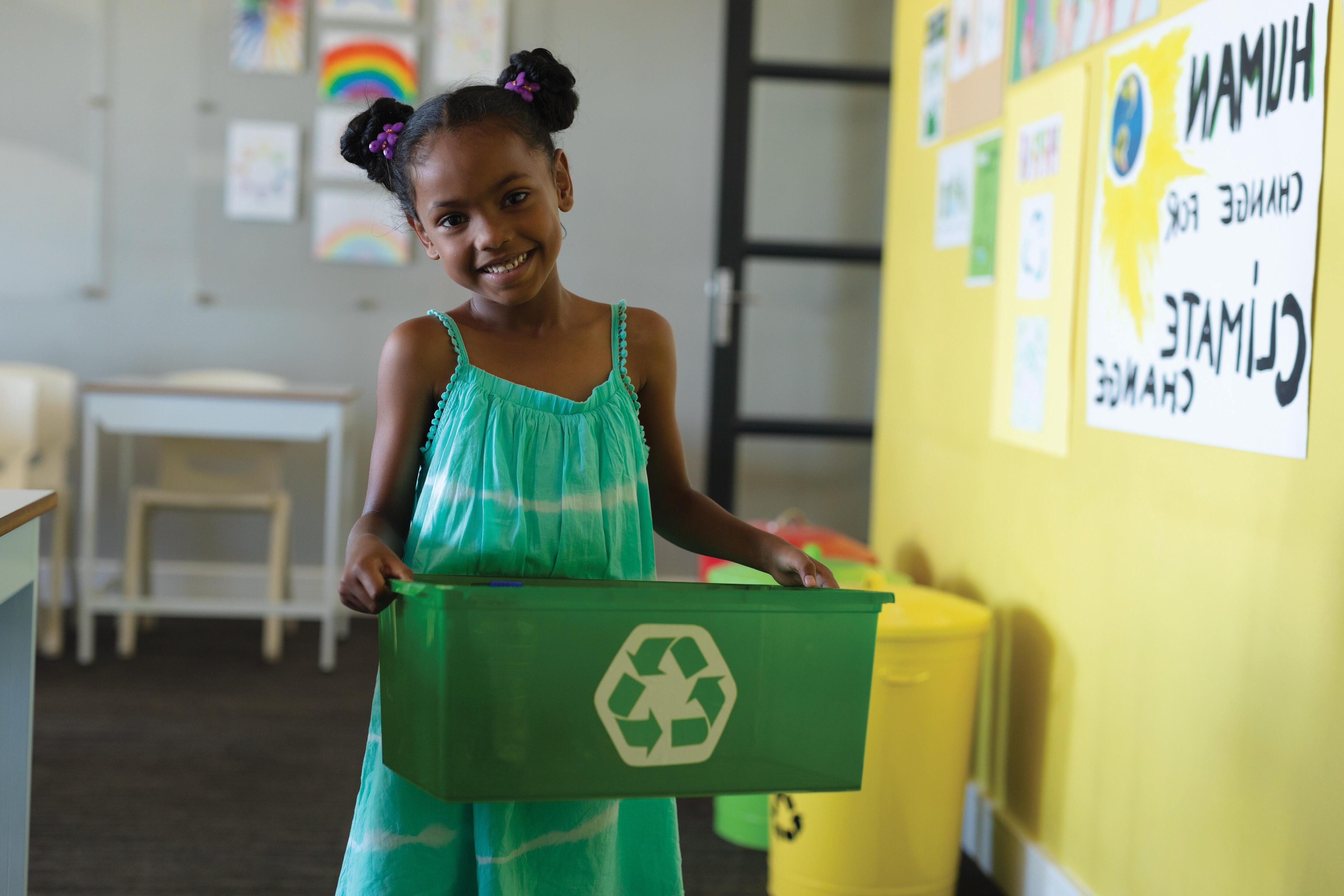

By WWF South Africa
CHEP, a global leader in sustainable supply chain solutions, has partnered with WWF South Africa, a globally respected conservation organisation. This collaboration seeks to enhance regenerative agriculture, strengthen water resource management and bolster biodiversity stewardship initiatives within the Southern Drakensberg region, setting a benchmark for integrated sustainability practices.
Initiated in June 2023, this 18-month project specifically targeted the uMzimkhulu Catchment area which holds the majority of CHEPs timber plantations. This area is identified as a Strategic Water Source Area in KwaZuluNatal, which is critical for water security and biodiversity conservation. The partnership underscores CHEP and WWF’s shared sustainability goals, which align with South Africa’s Sustainable Development Goals (SDGs) and the wider international commitments established at the United Nations Conference of Parties (COP). These frameworks underline the necessity of coordinated environmental stewardship to ensure resilience and sustainability in vulnerable ecosystems.
Since the inception of this partnership, significant strides have been made, impacting local communities and ecosystems. Over 1,400 individuals across approximately 287 households have benefited from enhanced access to clean, potable water through the effective protection and restoration of local natural springs. This improvement significantly elevates public health standards and enhances the overall community well-being.
Additionally, the initiative has directly supported local livelihoods by training and employing five community members as water monitors. These individuals are tasked with actively safeguarding critical water resources against contamination and misuse, ensuring long-term sustainability.
Economic empowerment has also been a key outcome of this project. The Rangeland Management component of the project has successfully facilitated three mobile livestock auctions, generating over R2.2 million in turnover. These financial resources directly support local farmers, encouraging sustainable farming practices, and enhancing the economic resilience of the broader community.
The formal protection of nearly 2,000 hectares of ecologically critical land has been accomplished under this partnership.
This decisive step plays an essential role in preserving biodiversity, protecting vital ecosystems, and promoting sustainable land management practices.
“CHEPs partnership with WWF underscores our unwavering dedication to sustainability and our commitment to creating positive, tangible impacts on both the environment and local communities," said Marietjie Brown, sustainability and government affairs lead for Africa, Middle East and Türkiye at CHEP. "As we mark the successful completion of phase one of the project, we remain excited about the journey ahead. We strongly believe that impactful partnerships can drive sustainable economic growth alongside responsible environmental stewardship."
This partnership exemplifies the effectiveness of public-private partnerships in addressing complex environmental challenges. By harnessing corporate leadership and conservation expertise, this partnership sets a high standard for achieving meaningful and measurable sustainability outcomes, both nationally and internationally, reflecting the spirit and commitments outlined by the global community during COP discussions.
"This initiative clearly illustrates the critical importance of integrated and collaborative approaches to environmental management and sustainability," commented Pavs Pillay, corporate partnerships and behaviour change lead at WWF South Africa. "Our collective efforts have already delivered substantial environmental and socio-economic benefits in the Southern Drakensberg, demonstrating the powerful impact of strategic cooperation in advancing conservation and community development."
The completion of phase one marks an important step in CHEPs ongoing partnership with WWF South Africa. Building on the progress achieved, CHEP is committed to continuing this collaboration to deepen impact and drive long-term sustainability for communities and the environment.
Paper and Packaging producer responsibility organisation, Fibre Circle, is collaborating with the Stellenbosch Municipality and the Zithande Mzansi Schools Programme, to relaunch the Green Schools Recycling Initiative, renewing its commitment to promoting environmental sustainability through targeted education and infrastructure in schools.
The Zithande Mzansi Green Schools initiative aims to equip local educators with the tools and knowledge needed to instil a culture of environmental responsibility from an early age. This includes the distribution of colour-coded recycling bins, educational materials aligned with the national curriculum, and ongoing training for educators and learners alike.
“Education is at the heart of this programme,” said Edith Leeuta, CEO of Fibre Circle. “Through this initiative, we are preventing valuable materials such as paper from ending up in landfills, whilst nurturing a generation of environmentally conscious leaders.”
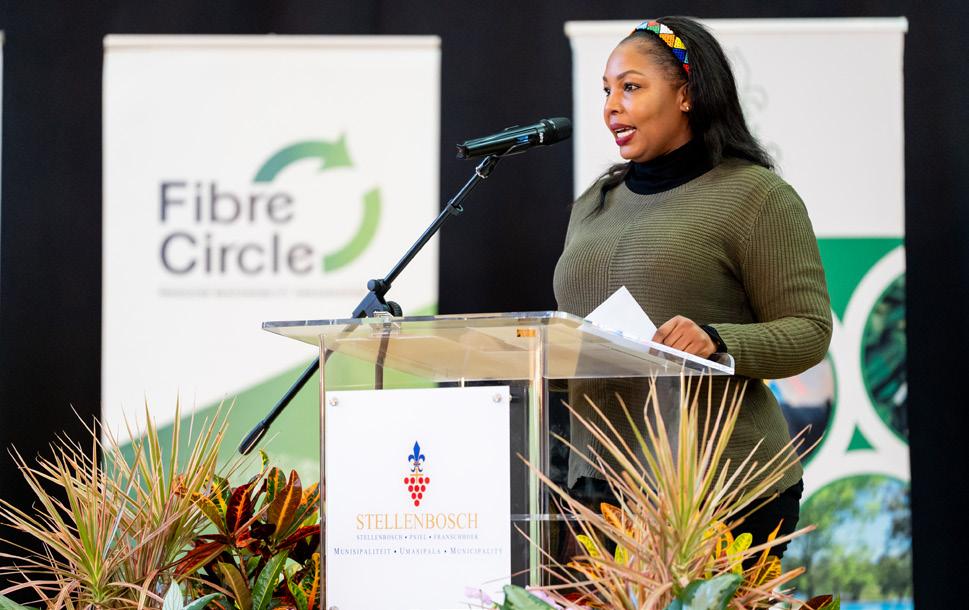


The original Green Schools Programme laid the foundation for recycling and sustainability education in local schools. Fibre Circle expanded on this model through a successful pilot project, providing three recycling bins and educational support to Webergedenk Primary in the Webers Valley just outside Stellenbosch. The results highlighted the programme’s potential to be scaled and replicated.
“The remarkable success we achieved at Webergedenk Primary School showed us what is truly possible when communities, schools, and municipalities work together, “she explains. “We have considered the learnings and successes of this initial pilot programme to develop the framework for the next phase of the initiative.”
The relaunched initiative will provide participating schools with the following support:
• Colour-coded recycling infrastructure
• Educational tools and materials to support the Zithande Mzansi Schools Programme
• Scheduled recyclable waste collection by the Stellenbosch Municipality
• Ongoing training sessions and workshops
• Programme monitoring and evaluation to ensure impact and accountability
With environmental degradation and landfill overflow posing significant threats across South Africa, the programme takes a proactive approach by positioning schools as powerful enablers and drivers of change. In addition to promoting greener habits, the initiative opens pathways to future careers in the circular economy, environmental sciences, and waste management.
“This is more than a just recycling programme,” Leeuta expresses. “It is a movement toward community empowerment, academic opportunity, and long-term environmental stewardship.”
The official launch event that took place at the Stellenbosch Town Hall on Thursday 29 May 2025 brought together learners, educators, municipal representatives, and community stakeholders to celebrate this collaborative step forward.
Fibre Circle and its partners welcome additional support, both logistical and educational, to ensure the programme’s successful adoption and longevity. Should your business wish to get involved, please contact info@fibercircle.co.za or call on (011) 593 3144.
For more information on Fibre Circle, you can visit www.fibrecircle.co.za
Remarks by President Cyril Ramaphosa at the high level virtual meeting of the Fourth International Conference on Financing for Development

Secretary-General of the United Nations, Mr Antonio Guterres, Your Excellencies, Heads of State and Government, Distinguished participants,
The world is in a race against time.
In five years from now, we must have achieved the Sustainable Development Goals that are essential for human well-being and progress.
We must achieve these goals not merely because we have committed them to paper, but because the health, welfare and happiness of billions of people depends on the progress we make.
The Fourth International Conference on Financing for Development is a crucial moment for the global community to accelerate its collective efforts.
The United Nations 2024 Report on the SDGs captures the gravity of the crisis.
The report makes it clear that we must think and act differently.
We must move faster and with far greater ambition.
Importantly, we must align our efforts across all available fora and platforms.
South Africa has been consistent that the priorities of its G20 Presidency should complement and support the ambitious objectives of the FfD4.
We have placed solidarity, equality and sustainability at the centre of our G20 Presidency, driven by our conviction that global challenges can only be resolved through cooperation, collaboration and partnership.
As one of the overarching priorities of our G20 Presidency, we are advocating for action to ensure debt sustainability for low-income countries.
The policy space available to developing countries is significantly constrained by their debt servicing obligations and their climate and development financing needs.
We know, for example, that 23 countries in Africa are paying more for debt costs than critical development enablers like health care and education.
South Africa seeks to advance sustainable solutions to tackle high structural deficits and liquidity challenges and extend debt relief to developing economies.
In support of this effort – and in pursuit of sustainable funding of the SDGs – South Africa will convene a side event at the FfD4 under the theme: “Forging a common agenda to achieve debt sustainability in developing economies”.
This event will bring together leading voices from various debt-related initiatives to identify synergies and areas of convergence. It will seek consensus and highlight solutions that enjoy broad support.
The Fourth International Conference on Financing for Development is a crucial opportunity to reshape the global financial system in support of the Sustainable Development Goals.
We must emerge from the conference with bold decisions and an ambitious action plan that leaves no country, no community and no person behind.
I thank you.
As communities around the globe celebrate Earth Day today, local government departments focusing on our environment are taking stock of the growing demands being placed on them as our country navigates the fast-evolving green policy landscape. This year’s Earth Day theme – Planet vs Plastics –has highlighted the urgency of environmental reforms and responsiveness, especially around sustainability-led governance. For South Africa, it also marks a critical checkpoint in our commitment to the United Nations Sustainable Development Goals (SDGs) and, more recently, its alignment with the G20’s environmental and climate priorities.

With South Africa gearing up to host the G20, Earth Day has created an additional “pause point” to evaluate the critical work already being done in the sustainability space – and how much more is needed.
“Earth Day is more than a symbolic moment. It’s a call to action for those shaping and implementing public policy,” says Sphiwe Masuku, Fundi’s Head of Brand and Marketing. “In South Africa, this means equipping our public servants from municipal to national level with the knowledge and tools they need to lead the shift towards more sustainable governance and service delivery. Their ability to do so directly impacts our ability to honour our G20 and SDG targets.”
Recent developments in this space reflect a rapidly changing regulatory environment in the green economy, many of which now need to be fast-tracked in response to policy decisions made by the US. The Department of Forestry, Fisheries and the Environment (DFFE)’s Draft National Climate Change Adaptation Strategy and Just Transition Framework, alongside updates to the National Environmental Management Act (NEMA) and new disclosure requirements linked to ESG reporting and procurement, are placing increasing demands on those working within government departments, municipalities and SOEs, for example.
“These reforms are critical to transitioning our economy, but they also require a new level of technical, regulatory and systems knowledge that many current public servants were never formally trained in,” Masuku explains.

“We are seeing growing numbers of public sector employees investing in their own education and training to keep up, particularly in areas including ESG reporting, sustainable infrastructure development, green procurement and circular economy models. This is encouraging and a trend that Fundi is well placed to continue supporting through our various funding solutions geared towards public servants.”
She notes that Fundi expects to see increased demand for education funding in the environmental and sustainability space – particularly for short courses, diplomas and postgraduate qualifications aligned to green economy competencies. These include public administration programmes with an ESG lens, climate policy and governance studies, and certification in sustainable procurement and environmental auditing. “New job opportunities are evolving as a result of these new needs, and we are seeing many individuals step-up to take full advantage of them; often becoming pioneers in these spaces.
“By investing in their own learning, public servants are not only enhancing their career prospects but contributing meaningfully to a more sustainable, resilient South Africa. This aligns perfectly with the commitments we’ve made on the global stage, including at COP28 and the G20.”
As the world reflects on the passing of another Earth Day, Fundi encourages departments – especially those of Environmental Affairs, Water and Sanitation, Transport, Energy, Trade and Industry, and Local Government – to see education as a powerful tool for transformation.
“Education is the lever we need to unlock sustainability. Without it, policy will stall. If we equip ourselves with education however, we can lead the continent and build a future that honours the promise of Earth Day – for ourselves, our country and our planet,” she concludes.
Every 8 June, the world marks World Ocean Day—a global observance that highlights the vital role oceans play in supporting life, livelihoods, and planetary health. First proposed at the 1992 Earth Summit in Rio de Janeiro and formally recognised by the United Nations in 2008, the day serves as a clarion call for collective action to safeguard our oceans and stabilise the climate.
The 2025 theme, “Wonder: Sustaining What Sustains Us”, is a powerful reminder: the ocean not only sustains us materially— through food, energy, and trade—but also inspires, connects, and nurtures us. This year’s message is aimed squarely at policymakers: do not lose sight of the ocean’s inherent wonder when making decisions that will shape its future.
Raising Awareness, Driving Action World Ocean Day is a platform to raise awareness of the destructive impacts of human activities—from pollution to overfishing—and to galvanise a global movement for ocean stewardship. It’s a day to inform, mobilise, and unite people around the sustainable management of marine ecosystems.
In the IGAD region, these objectives are not just aspirations— they are active commitments. As a continental leader in championing the blue economy, IGAD (Intergovernmental Authority on Development) has developed a comprehensive Blue Economy Strategy under its Agriculture and Environment Division. The strategy aims to sustainably harness the marine

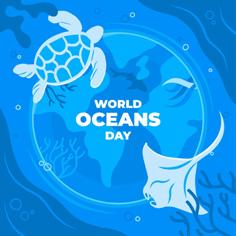
and aquatic resources of the Red Sea, Gulf of Aden, and Indian Ocean—aligned with national strategies of Member States.
The IGAD Approach: Innovation Meets Sustainability
IGAD’s Blue Economy Strategy takes an integrated view of marine resource management. It recognises the need to modernise traditional sectors such as fisheries and maritime transport while investing in emerging industries like marine renewable energy and ocean-based biotechnology.
IGAD Member States are already demonstrating how economic growth can go hand-in-hand with ecosystem conservation and climate resilience. This shift requires not only innovative financing and coordinated policy-making, but also inclusive governance and mechanisms that ensure both economic and ecological returns.
In Djibouti, IGAD has launched targeted awareness campaigns to combat plastic pollution—one of the gravest threats to marine life. With its capital and coastal towns lining the Red Sea, Djibouti faces mounting waste challenges exacerbated by high population density and refugee influxes.
IGAD’s campaign included beach clean-ups and public engagement, alongside the distribution of educational materials—banners, notebooks, pens and reusable bags— designed to visualise the risks facing marine ecosystems. The effort underscores the need for both behavioural change and systemic solutions to plastic pollution.
Empowering Communities: Women and Youth in the Lead Recognising the critical role of communities in environmental stewardship, IGAD has invested in building the capacity of women and youth to lead conservation efforts. Through hands-on training, participants have gained the knowledge and communication skills needed to protect marine and aquatic environments, advocate for sustainable practices, and serve as champions of change within their communities.
IGAD is also working to support Member States in meeting the Kunming-Montreal Global Biodiversity Framework (KMGBF), which aims to halt and reverse biodiversity loss by 2030. One of the key targets—protecting 30% of the world’s oceans by 2030—has been embraced through a regional initiative to promote Marine Protected Areas (MPAs). A recent workshop convened policymakers to strengthen MPA designations and improve the management of existing sites.
As the world gathers in Nice, France, for the 2025 United Nations Ocean Conference (9–13 June), the spotlight is already turning towards Africa. Kenya, an IGAD Member State, will make history as the first African nation to host the 4th UN Ocean Conference in 2026.
This milestone offers a unique opportunity for Kenya and the IGAD region to elevate the blue economy agenda and push for stronger global action on ocean-climate resilience, sustainable fisheries, marine conservation, maritime security and pollution control. The conference is expected to drive practical commitments by governments, civil society, academia, and the private sector—turning ambition into impact. n

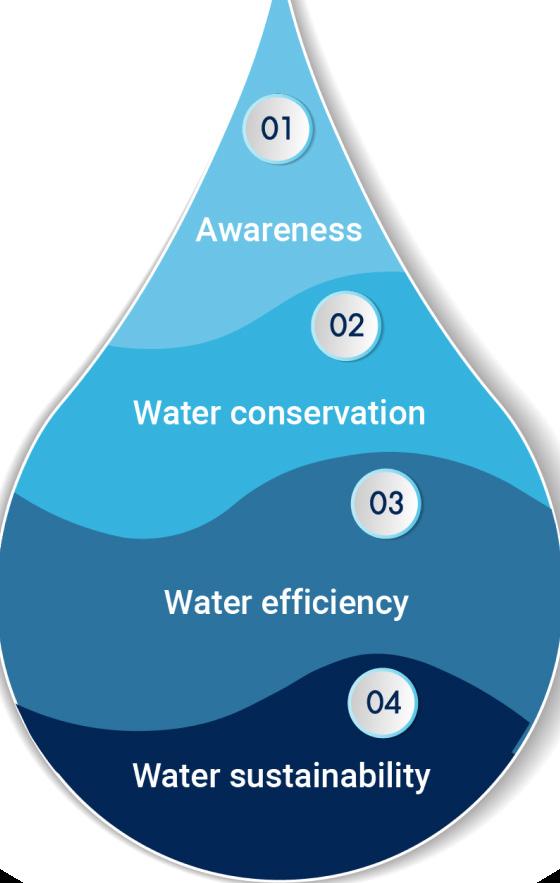
Beyond Awareness: Making Water Conservation Education Actionable. We must confront the uncomfortable truth: despite years of well-intentioned awareness campaigns, our national water crisis continues to deepen. In his recent State of the Nation Address, President Ramaphosa emphasised that ensuring a secure and reliable water supply across the country is an urgent priority, acknowledging what many South Africans experience daily as taps run dry in cities, towns, and informal settlements.
South Africa's water challenges are multilayered and complex. As a naturally water-scarce nation with rainfall well below the global average, we face increasing pressure from climate change, which has triggered more frequent and intense droughts in some areas and devastating floods in others.
If current trends continue, experts warn that South Africa could face a 17% water supply deficit by 2030. Yet, despite these alarming statistics, water conservation often remains a secondary concern for many South Africans. Standard conservation messages—such as turning off taps while brushing teeth, taking shorter showers, and fixing leaks—while sound advice, are insufficient to drive the large-scale behavioural change required. South Africa doesn’t need more awareness; it needs education that contextualises water conservation within people's lived experiences. We must move beyond telling people what to do and instead help them understand why water conservation matters—personally, economically, and socially.
Public participation in conservation isn't merely symbolic; it delivers measurable results. A typical household that installs water-efficient fixtures, fixes leaks, and adopts water-wise practices can reduce its water consumption by up to 50%. Now, multiply that across millions of households, and the impact becomes transformative. For example, a single leaking toilet can waste up to 100,000 litres of water annually. Fixing such leaks in just 10% of South African homes would save billions of litres each year. When businesses implement water conservation measures, the scale of savings increases exponentially.
These conservation efforts aren’t just a way to delay the inevitable—they create crucial breathing room, allowing water infrastructure investment to catch up. However, for this to work, water conservation education must be tailored to different contexts. For someone in an informal settlement, being told to turn off the tap while brushing their teeth is meaningless—they may not even have a tap. However, helping them understand how reporting a leak in a communal tap can improve water pressure and reliability makes conservation relevant. Similarly, showing small business owners how water shortages could disrupt operations makes them more likely to act, as they see the clear economic impact. The Financial Sector’s Role in Water Education - Financial institutions are uniquely positioned to support water education in several ways:
FNB has implemented comprehensive water conservation measures throughout our operations, including installing low-flow fixtures, conducting regular maintenance, and running
Cape Town’s response to its water crisis demonstrated the power of this approach. By communicating honestly about the severity of the situation, providing specific and practical guidance, and fostering a sense of shared responsibility, the city achieved a remarkable 50% reduction in water usage within three years.
awareness campaigns for staff and customers. These visible commitments normalise water conservation as standard business practice.
By offering financial products that enable water-saving investments—such as affordable financing for rainwater harvesting systems or filtration and IOT solutions, banks can help remove financial barriers to conservation and accelerate the adoption of water-saving technologies.
Banks can leverage their platforms to share targeted water conservation information. FNB’s app-based Water Coach within Nav in Earth is a prime example of practical education in action. It provides users with a step-by-step guide to achieving water security, highlights the importance of conservation, and encourages action through an interactive, activity-based approach.
The scale of South Africa's water crisis demands that we move beyond fragmented approaches. Government, businesses, civil society, and communities must work together to develop educational initiatives that build not just awareness but understanding and commitment to change. By giving South Africans compelling reasons to value and conserve water, we can lay the foundation for lasting behavioural change that secures our water future. n
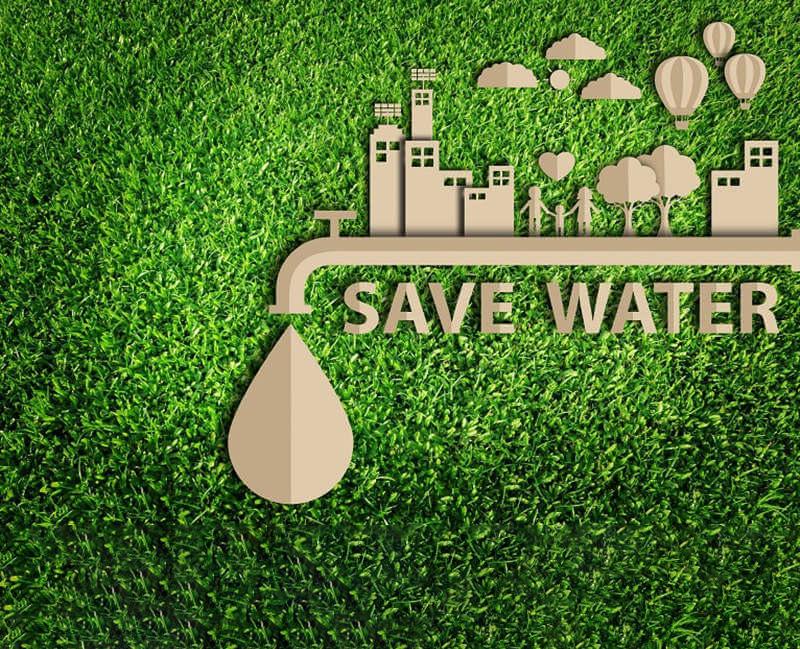
While much of the focus is on fixing failing infrastructure or regulating industrial water use, collective conservation efforts by individuals, families, and communities can significantly alter South Africa’s water trajectory. Cape Town’s dramatic reduction in consumption—from 1.2 billion litres per day to nearly half that amount—was not achieved through infrastructure improvements alone but through millions of residents adopting new water saving habits.

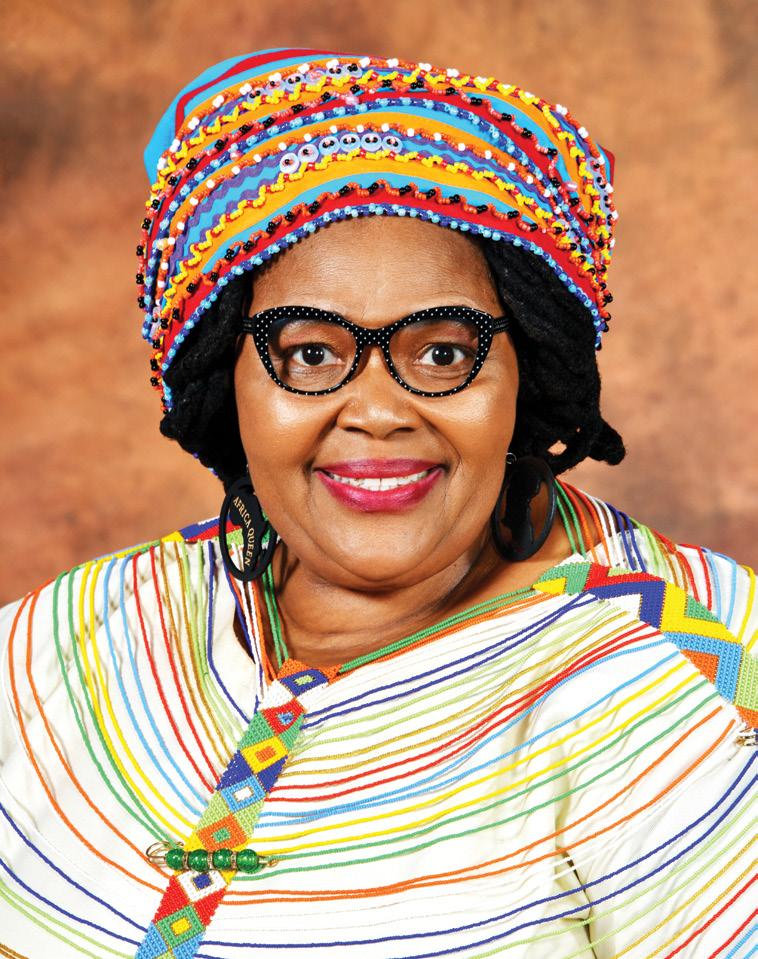

In a landmark move to address South Africa’s water and sanitation challenges, the Department of Water and Sanitation (DWS) has drawn a firm line in the sand. At the recently concluded National Water and Sanitation Indaba, held on 27–28 March 2025, the Department unveiled a bold, urgent, and action-focused strategy designed to reshape the nation’s water future. Far from being a ceremonial gathering, the Indaba, which was led by Minister Pemmy Majodina, served as a rallying point for implementation, signalling a new chapter in the country’s water governance.
Held at the Gallagher Convention Centre in Midrand, the Indaba brought together a broad spectrum of stakeholders, including senior government officials, municipal representatives, water sector experts, business leaders, academics, and civil society organisations. The mission was to formulate and commit to a unified, action-driven roadmap aimed at securing South Africa’s water future. →
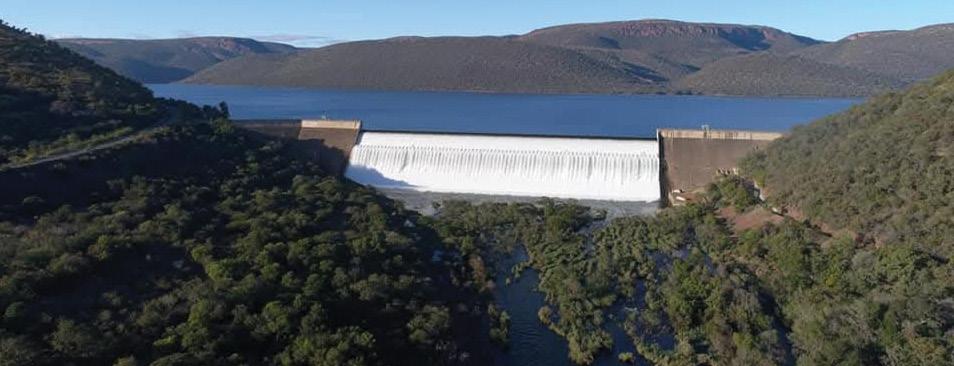
“We cannot talk about human rights and economic development without talking about water,” Minister Majodina said during her keynote address. “This Indaba is not just a platform for debate, it is the foundation upon which implementation will be built.”
The urgency underscored by Minister Majodina reflects the sobering reality of South Africa’s water landscape: deteriorating infrastructure, service delivery gaps, mounting climate change threats, and growing demand across sectors. But what sets this year’s Indaba apart is a definitive shift from diagnosis to action. The event culminated in a comprehensive declaration and set of key resolutions intended to guide national and local responses in the years ahead.
Chief among these resolutions is the fast-tracking of critical water infrastructure projects. This includes the rehabilitation and upgrade of water treatment facilities, expansion of bulk water systems, and construction of climate-resilient infrastructure to combat service disruptions and ensure long-term supply reliability. Minister Majodina emphasised that such investments would be underpinned by enhanced governance and stricter oversight.
To that end, all Water Services Authorities (WSAs) are now mandated to submit Corrective Action Plans (CAPs) by the end of May 2025 and begin implementation by June. The Department has committed to enforcing these timelines and intervening in municipalities that fail to comply. This enforcement will be accompanied by tighter performance monitoring and accountability mechanisms, a long-overdue response to widespread underperformance in the municipal water space.
Addressing water conservation, the DWS has pledged to roll out a national water-saving campaign, urging all citizens and institutions to play their part in protecting this finite resource. This campaign, to be developed in collaboration with civil society and the private sector, will promote behavioural change and public education, while also cracking down on illegal water connections and leaks. All WSAs and Water Service Providers (WSPs) are expected to implement non-revenue water management programmes and adopt conservation and demand management strategies by May 2025.
The Indaba also highlighted the need for innovation and
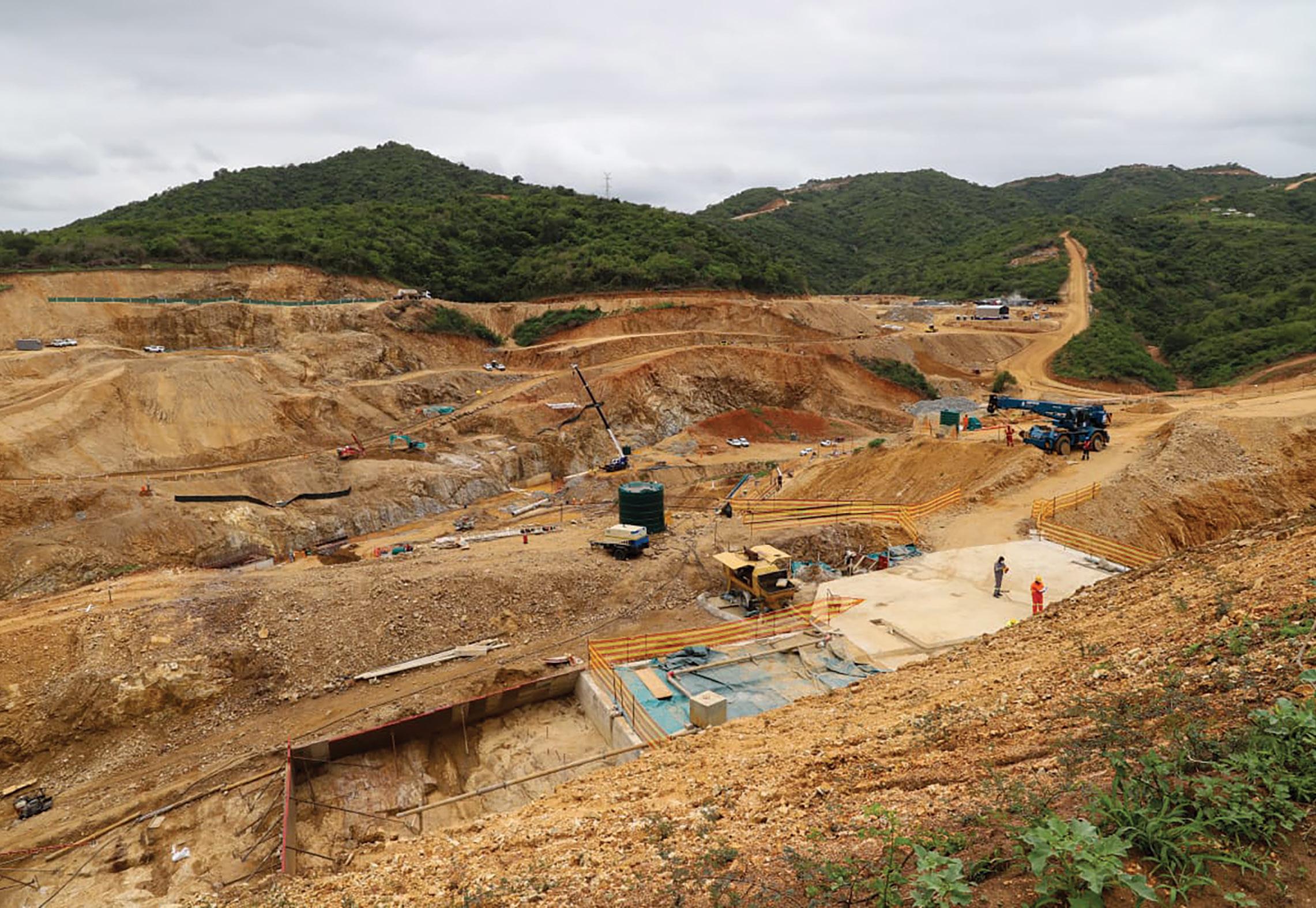
We cannot talk about human rights and economic development without talking about water,” Minister Majodina “ ”
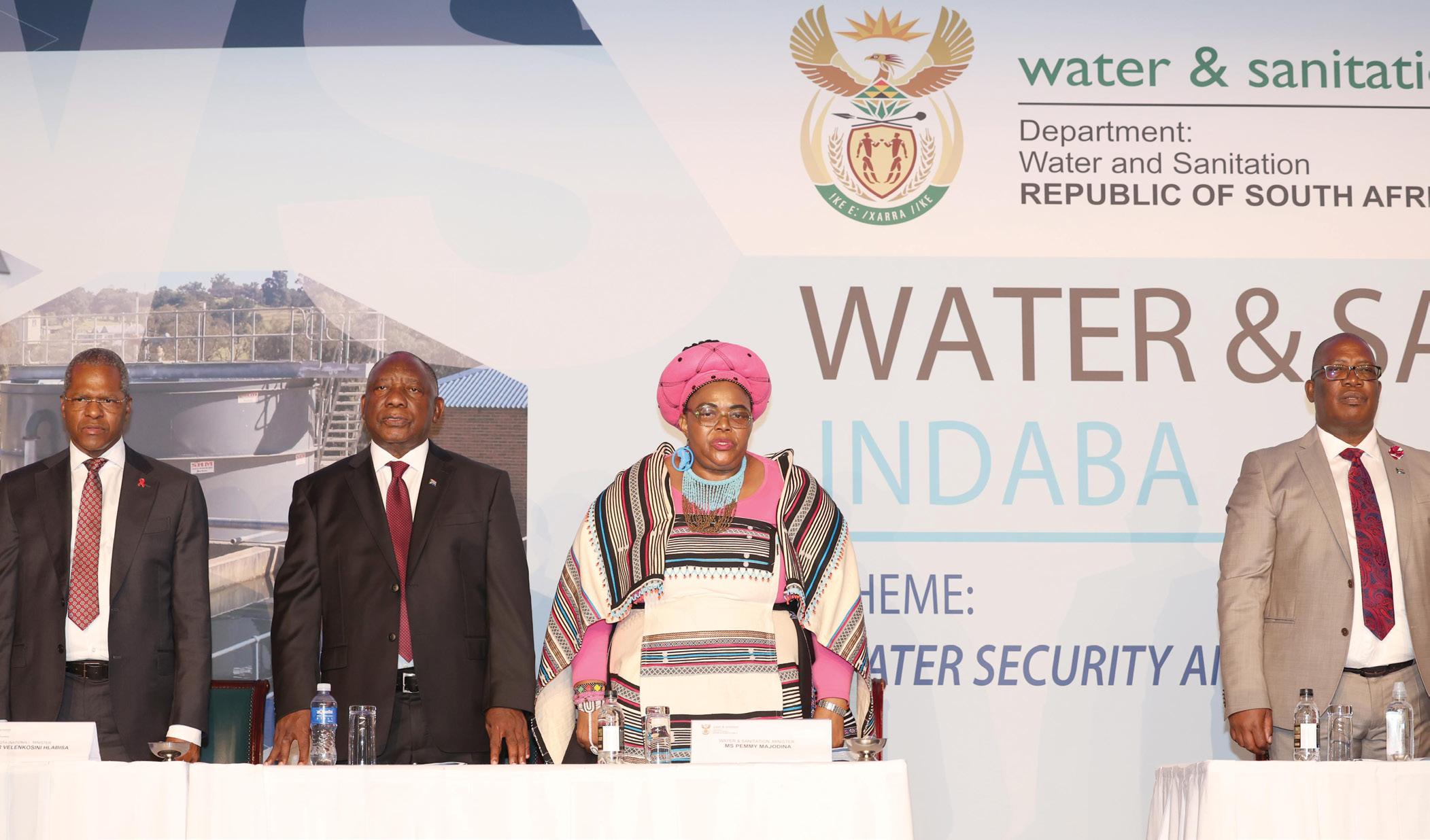
diversification in water supply. South Africa, traditionally reliant on surface water, will now accelerate the development of alternative sources such as desalination, groundwater extraction, and wastewater reuse. These initiatives are designed to build resilience in the face of erratic rainfall patterns and increasing water stress.
In a landmark financial policy shift, the revised Raw Water Pricing Strategy will be implemented by April 2026. This reform seeks to establish a more equitable and sustainable framework for the pricing of raw water, aligning economic incentives with conservation goals and ensuring that water usage reflects true environmental costs.
Recognising that the state cannot shoulder these challenges alone, the Indaba reaffirmed the critical role of public-private partnerships in unlocking capital, skills, and innovation. Minister Majodina confirmed that a new independent economic water regulator will be established within three years to provide regulatory certainty and encourage investment in the sector.
Institutional reforms are also on the horizon. Legislative amendments to the Water Services Act will be tabled in Parliament by May 2025. These will introduce a licensing regime for WSPs, enforceable by June 2026, to enhance service quality and protect consumers. Furthermore, all metropolitan municipalities are required to implement the Reform of Metropolitan Trading Services Programme within two years, transitioning to professionally managed utilities, with secondary cities following suit over the next five years.
With increasing threats to infrastructure from vandalism and theft, all WSAs must develop comprehensive infrastructure security strategies within six months. These strategies will focus on physical protection, surveillance, and community partnerships to safeguard vital assets.
One of the most powerful themes emerging from the Indaba was the reinforcement of water as a human right, a principle
echoed by the alignment of the event with both Human Rights Month and National Water Month. This highlighted that indeed water security is essential for human dignity, environmental sustainability, and inclusive economic growth.
The resolutions further included the establishment of a National Water and Sanitation Advisory Committee to provide strategic guidance and review progress on key interventions. Additionally, the DWS has committed to regular progress reports, ensuring transparency and accountability in the execution of its plans.
The Indaba gathering was marked by realism and unwavering resolve. There was recognition that years of underinvestment, poor planning, and governance failures have brought the water and sanitation sector to a tipping point. But there was also a shared determination to turn things around. Minister Majodina’s final remarks captured this aptly: “The time for talking is over; now is the time for action. We will not rest until every South African has access to clean, reliable, and sustainable water.”
As South Africa embarks on a new era in water and sanitation management, the success of these ambitious plans will depend not only on government execution but also on the active engagement of communities, businesses, and civil society. The journey may be complex, but the goal is unwavering and will ensure a future where all South African enjoys reliable and consistent water security. n
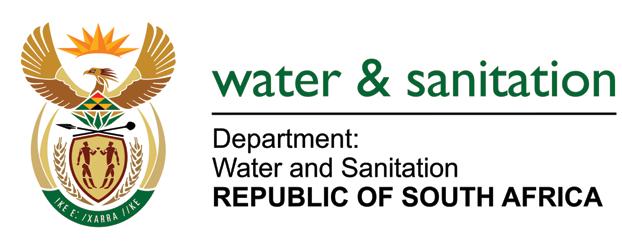
Citizens are urged to use water sparingly and support initiatives aimed at conserving the country’s most precious resource. With the theme of this year’s campaign focused on educating the public about water conservation, urgent attention is also being drawn to the deteriorating state of municipal water infrastructure and the pressing need for investment in high-quality piping solutions to ensure water security for future generations.
Towns and cities throughout South Africa have been experiencing frequent and widespread water outages, particularly in early summer when demand rises with higher temperatures. According to the National Department of Water & Sanitation’s (DWS) Water Security Dashboard (www.dws.gov.za) the balance between supply and demand is expected to persist until the completion of Phase Two of the Lesotho Highlands Water Project, the Polihali Dam, scheduled for 2028. Additionally, years of underinvestment in municipal infrastructure have led to declining service levels, with theft, vandalism, and loadshedding further exacerbating the crisis.
A significant concern is the high level of municipal water losses, which includes both non-revenue water (NRW) —water that is pumped but not paid for—and real or physical losses, which refer to water lost through leaks and system failures. In Johannesburg, for example, NRW currently stands at a staggering 46%, while the figures for Ekurhuleni and Tshwane are 30% and 36%, respectively. Real losses, which should be below 15%, are currently at 35% in Johannesburg, 28% in Ekurhuleni, and 33% in Tshwane. With approximately 500 leaks reported in Gauteng metros daily, urgent infrastructure maintenance and upgrades are needed to stem these losses.
Jan Venter, CEO of the Southern African Plastic Pipe Manufacturers Association (SAPPMA), highlights the critical role of reliable water infrastructure and the importance of using high-quality pipes that meet international standards.
“Our country is facing a water crisis that is worsening every year due to infrastructure failures and excessive water wastage. The only way to ensure a sustainable water future is through urgent investment in durable, high-quality water infrastructure. It is crucial that municipalities specify the use of only pipes bearing the SAPPMA logo in all water repairs, upgrades, and installations. This guarantees that the pipes meet international quality standards and will not fail prematurely, leading to further water losses.”
To enforce these standards, SAPPMA continues its Operation Superior Quality, which includes ongoing unannounced audits and strict compliance checks to ensure that only the best-quality pipes are used in South Africa’s water infrastructure projects.
The DWS, in collaboration with Rand Water and Gauteng municipalities, has been working on a coordinated response to address water supply challenges since 2022. In June 2024, the Platform for a Water Secure Gauteng (PWSG) was established to
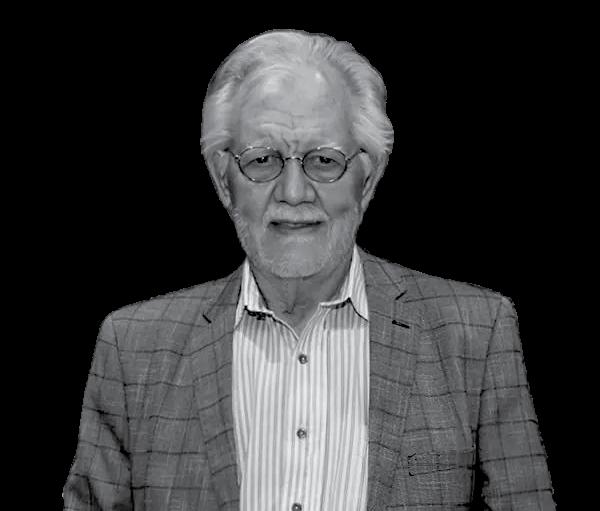
bring together public sector entities, private sector stakeholders, and civil society to tackle the crisis collectively.
In his 2025 State of the Nation Address, President Cyril Ramaphosa acknowledged the dire state of municipal services, including disruptions to water and electricity supply, neglected roads, and failing sanitation systems. He announced that national government would begin working with municipalities to establish professionally managed, ring-fenced utilities to ensure sustained investment and maintenance of water and electricity infrastructure.
Ramaphosa further outlined plans to review the municipal funding model, as many local governments lack a sustainable revenue base. The government is engaging financial institutions and investors to unlock R100 billion in infrastructure financing, with revised regulations for public-private partnerships (PPPs) aimed at mobilising private sector expertise and funding.
Over the next three years, government has pledged to allocate over R940 billion to infrastructure development, with R375 billion earmarked for spending by state-owned enterprises (SOEs). This funding is intended to revitalise roads, bridges, dams, and waterways, modernise ports and airports, and support economic growth. The Infrastructure Fund has already approved 12 blended finance projects worth nearly R38 billion over the past year.
However, SAPPMA remains cautiously optimistic about these promises. “We sincerely hope that these commitments do not become yet another set of empty promises and failing pipe dreams. South Africa desperately needs substantial investment in its water infrastructure, and we need to see genuine political will to see these projects through,” says Venter.
While systemic changes and infrastructure investments are necessary, individual and collective action remains crucial in addressing the current water crisis. Citizens, households, and businesses must actively participate in water conservation by reducing consumption, fixing leaks, and using water-efficient technologies.
As South Africa observes National Water Week, the message is clear: Every drop counts and every pipe matters. Through proper infrastructure investment, improved municipal management, and responsible water usage, we can safeguard South Africa’s water future for generations to come. n
For more information visit www.sappma.co.za

The spotlight once again turns to the importance of reliable and safe water infrastructure. In South Africa and globally, polyvinyl chloride (PVC) pipes and fittings play a critical role in delivering clean, potable water to millions of people, ensuring that communities have access to safe drinking water.
PVC Pipes: A Proven, Safe, and Reliable Solution
PVC has long been recognised as one of the most durable and cost-effective materials for water infrastructure. With their long lifespan, corrosion resistance, and minimal maintenance requirements, PVC pipes provide a sustainable and efficient solution for water distribution networks.
One of the recurring concerns about PVC pipes has been the potential for vinyl chloride leaching. However, recent studies have once again confirmed that PVC water pipes
water pipes. The report emphasises that PVC pipes are a safe and effective choice for drinking water systems, offering communities peace of mind when it comes to water quality and safety.
Supporting Water Security in South Africa
With ongoing water challenges in South Africa— ranging from aging infrastructure, water scarcity, and contamination risks—it is more crucial than ever to invest in sustainable and resilient water solutions. PVC pipes provide a reliable answer to these challenges, offering:
Corrosion resistance – Unlike metal pipes, PVC does not rust or degrade over time.
Chemical safety – Independent studies confirm that PVC pipes do not leach harmful substances into drinking water.
A Commitment to Clean Water for All


Water is under pressure in South Africa. In addition to being a water scarce country, climate change, ageing infrastructure, and growing demand due to population growth and urbanisation are making reliable water access uncertain for a growing number of households.
While the scale of the problem can feel overwhelming for the average person – leading to most of us turning a blind eye in the hope that government or big business will fix the problem - the truth is that every South African has an important role to play in helping to build a more water-secure future.
That’s why, FNB is calling on all South Africans to take practical steps to reduce their water use and protect their supply.
“Water touches every part of life, from health to food to livelihoods,” says Kival Singh, Head of FNB Sustainability & ESG Solutions. “But when you’re dealing with day-to-day pressures, it’s easy to forget that water doesn’t just come from a tap and make the mistaken assumption that water security is someone else’s responsibility.”
Singh explains that FNB wants to change this way of thinking and make it easier for people to become actively involved in saving and protecting water for their own benefit and that of their communities and future generations. To achieve this, the bank takes a three-pronged approach to partnering with its clients, and all South Africans, in conserving water. “Our goal is to empower people with information, give them practical solutions and remove the financial barriers to ensure they can access the water solutions they need,” Singh explains.
Central to FNB’s approach is education that leads to action. The bank’s Water Coach feature, available via the FNB App under nav»Life → nav»Earth, is a good example of this practical education in action. It is designed to help users understand their personal water consumption habits, uncover opportunities to save water and get personalised tips that fit their home and lifestyle. The Water Coach not only tracks and analyses behaviour, but also explains why conservation matters – turning awareness into real behavioural change.
“People often don’t realise how much water they use or waste,” Singh says. “The Water Coach gives people insight into their usage and advice that fits their lifestyle. It’s about making the connection between personal action and national impact.”

“ ”
Our goal is to empower people with information, give them practical solutions and remove the financial barriers to ensure they can access the water solutions they need.

Securing South Africa’s water future is not a challenge government can tackle alone. It requires a collective response that draws on the strengths of the public and private sector, civil society, and every individual.
Rainwater harvesting systems that collect and filter rain from rooftops for use in toilets, gardens and even laundry – helping households cut their municipal water use.
Municipal water backup systems, like the JoJo 750L Backup Solution, which comes pre-assembled with a tank, pump and fittings to store municipal water for use during outages.
Advanced backup options like the JoJo 1000L Tank & Filter Combo, which includes a pump and inline filter –making the stored water safer for basic household use.
Fully integrated backup systems for homes that want a seamless water switch during outages. These include pressure-controlled pumps, filtration and larger storage capacity.
Filtration and purification systems that improve the quality of stored or harvested water, ensuring it’s safe for drinking and everyday use.
Smart metering and leak detection tools that allow homeowners to monitor consumption and pinpoint issues before they lead to waste or damage.
All these innovative water collection and conservation products are supplied in partnership with accredited providers, and FNB customers can get up to 20% off select systems when purchasing via the eBucks platform at eBucks.com. Expert assessments are also available to help match households with the right solutions for their needs, home setup and budget.
FNB has also made it easier for South Africans to access these water solutions through a range of flexible and affordable funding options. Customers can choose from personal loans, revolving credit or secured facilities using paid-off property. There’s also an option to register an additional 15% of a new home loan upfront to fund eco-upgrades like water systems, with no additional bond registration fees and up to 30 years to repay.
“People need water security now, not in five years’ time when they’ve saved up enough money to afford them,” says Singh. “That’s why we’ve worked hard to create funding options that are quick, flexible and realistic.”
He emphasises that water insecurity isn’t just about taps running dry; it’s an issue that also affects food security, health, economic opportunity, and equality. “By partnering with South Africans to help them take control of their water use, we’re investing in the future of every family, business and community - and our country as a whole,” he points out.” “The journey to water security starts with one step – and FNB is ready to walk it with you.”
“Securing South Africa’s water future is not a challenge government can tackle alone. It requires a collective response that draws on the strengths of the public and private sector, civil society, and every individual,” says Sipho Silinda, CEO of Public Sector Banking at FNB. “At FNB, we recognise the critical role we play in supporting national priorities. By empowering our customers with tools, knowledge, and funding solutions to actively manage their water use, we are complementing public sector efforts to build a more resilient and water-secure South Africa. Together, we can turn individual actions into national impact.”
For those ready to go further, FNB has made a wide range of practical water solutions available through FNB Connect and eBucks.com. These include:
Find out more about FNB’s water solutions, and its affordable financing options from just R1500 per month, on the FNB App or at eBucks.com under the Eco-Home category. n

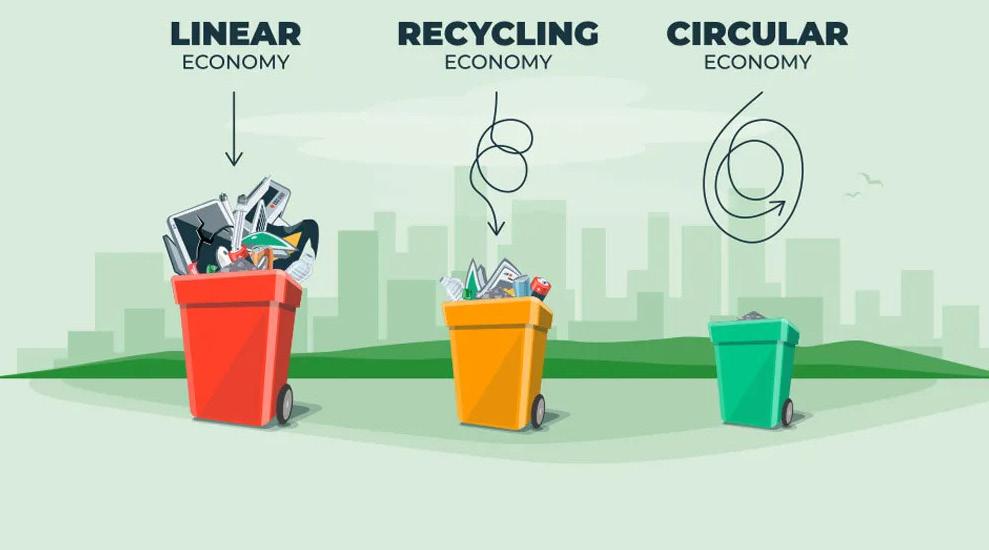
The importance of waste sorting has become one of the most crucial issues of our time. Plastics are polluting the rivers and seas, increasingly threatening the food chain and sea life. Waste sorting is the process of properly managing and disposing of the waste we generate in our homes, workplaces, and communities to ensure it doesn’t end up in places it shouldn’t. However, sorting does not fully reflect the true complexity and importance of proper waste management. This is because sorting doesn’t necessarily ensure that the separate collection, transportation, and transformation into reusable materials are done solely to minimize environmental harm. Often, there is a more significant economic profitability aspect at play, which seems to be failing in most cases.
Therefore, to fully grasp the importance of waste management, we need to understand what waste is, how it is generated and managed, and why the consequences of these processes are becoming increasingly costly for our environment and economy.
Waste can be defined as any substance or object discarded, intended to be discarded, or required to be discarded. This includes a wide range of materials, from food packaging to end-of-life electronics. So, everything man made is eventually a waste while nature knows how to recycle its waste. The recycling programs often operate on the assumption that all waste can be recycled, which is not the case. The heterogeneous nature of industrial products makes recycling impossible from the start. The assumption that waste sorting is sufficient stems from an optimistic but flawed belief that all sorted waste finds a new life, overlooking the reality of recycling inefficiencies and market demands.
The economic aspect of waste management is a significant barrier. Sorting waste and recycling processes require substantial investment in facilities, technology, and labour. The costs associated with these processes often outweigh the profits from selling recycled materials, leading to a reliance on cheaper and
often less environmentally friendly waste management methods, such as landfilling and incineration.
The main issue is that products are designed with manufacturability, price, and marketability in mind, without considering end-of-life recyclability. This leads to a significant portion of waste that is either non-recyclable or not economically viable to recycle. The market for recycled or used products is not as expansive as one might think. Quality and contamination issues can make recycled materials less desirable than virgin materials. Manufacturers seeking recycled materials may only want specific properties and in limited quantities, and at times, not always aligning with the availability of the demanded recycled materials.
So, the question is, how do we channel innovation and investment into sustainable industrial design? Clear policy changes that influence how goods are manufactured are needed. This includes implementing extended producer responsibility (EPR) programs, where manufacturers must trace, repair, and recycle their goods. Buyers of these products could also be held accountable for delivering them to authorized end-of-life locations. Policies that incentivize and encourage product design with recyclability, life cycle, and repairability criteria, and the development of markets for refurbished goods, are crucial for creating a circular economy.
In conclusion, waste sorting is just one facet of the waste management challenge. To address the environmental and economic issues of waste effectively, we must consider the entire picture. This involves rethinking product design, improving recycling processes, developing new markets for recycled materials, and crucially, reducing waste generation at its source. Only through a comprehensive and integrated approach can we begin to tackle the waste management crisis threatening our ecosystems and our future. n

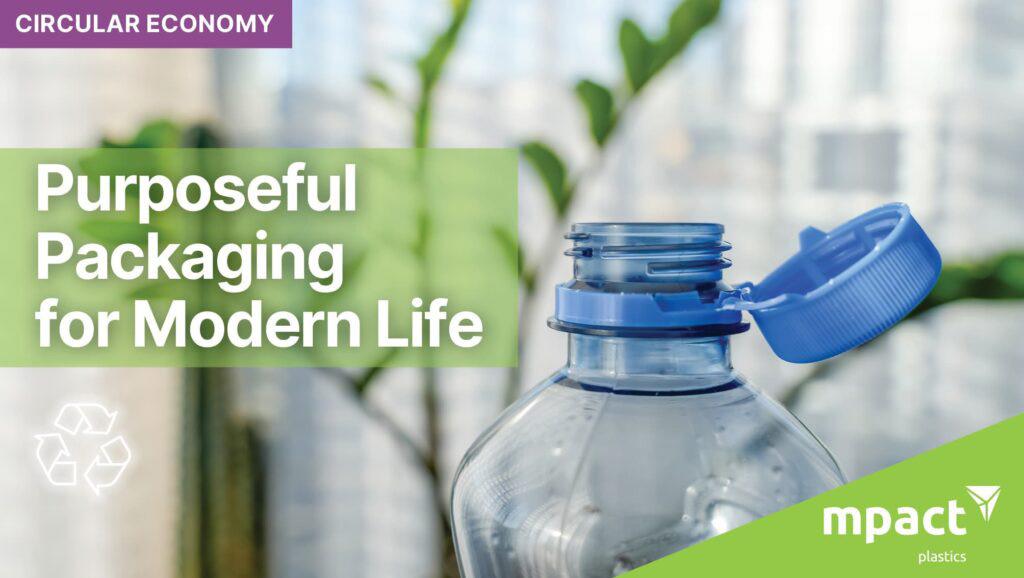
Plastic packaging is one of the most important materials in our modern lives. It keeps food fresh, protects medical supplies, ensures the safe transport of goods, and plays a critical role in hygiene, health, and efficiency across industries. Without plastic, sectors such as healthcare, food, and logistics would face significant challenges related to spoilage, contamination, and distribution.
Thanks to innovations in polymer science and advanced design tools, packaging can be right-weighted, engineered for barrier performance, and tailored to the exact needs of the product. This enables lower material use, longer shelf life, and improved safety – benefits that few alternative materials can match at the same scale or cost.
Yet plastic packaging remains a paradox. We rely on it daily, but mismanaged plastic waste can cause harm to the environment. The solution is not to eliminate plastic altogether, but to design better systems: circular packaging, smarter waste management, and collaboration across the value chain.
At Mpact Plastics, we are actively driving the transition toward a more circular plastics economy. Our approach is structured around three key pillars: sustainable design and manufacturing, regulatory alignment, and value chain collaboration.
The first pillar focuses on sustainable design and manufacturing Every product we create is designed according to Design for Recycling principles, ensuring it can be effectively recovered and processed within South Africa’s recycling infrastructure. We work to optimise the ratio between performance and material use - reducing plastic content without compromising on strength, safety, or product integrity. Our manufacturing facilities are also transitioning toward cleaner operations, including investments in solar energy, and we are working toward defined energy and water efficiency targets. In line with our environmental commitments, we prioritise the use of recycled materials where possible and ensure that all virgin polymers are responsibly sourced.
The second pillar is support for regulatory compliance. Mpact Plastics is fully compliant with South Africa’s Extended Producer Responsibility (EPR) regulations. We collaborate closely with Polyco and the Department of Forestry, Fisheries and the Environment (DFFE) to meet - and, where possible, exceed - the required recycled content inclusion targets. For our customers, this means peace of mind: our packaging solutions are not only fully compliant, but they also enhance their brand’s sustainability.
Our third pillar is collaboration across the value chain. As part of the Mpact Group, we are aligned with Mpact Recycling, South Africa’s leading recycler, which collects over 600,000 tonnes of recyclables each year. We work with recyclers, brand owners, and industry stakeholders to strengthen the supply of high-quality recycled content and to increase the circularity of our packaging systems. As a proud member of the SA Plastics Pact, we are committed to the shared goal of eliminating unnecessary plastics, improving recyclability, and significantly increasing recycling rates. Beyond our operations, we actively support clean-up campaigns, awareness drives, and youth education programmes that promote responsible plastic use and recycling behaviours across the country.
Together, these three pillars form the foundation of our circular strategy.
When used responsibly, plastic is purposeful, efficient, and sustainable. At Mpact Plastics, we are committed to providing smarter, sustainable solutions. n


Watch our video

The forestry, pulp and paper industry has long embraced the circular economy approach, continuously innovating to maximise resource efficiency and minimise waste.
When we think of wood or paper, we often picture a plank of wood, a ream of paper, or a notebook. Mention paper packaging, a cardboard box may come to mind. But what about a toilet roll, textiles, or even chemicals? These everyday essentials also have their roots in wood.
Biotechnology and innovation are helping the forest product sector to use sustainably farmed trees in ways we never imagined possible.
Wood is made up of cellulose, hemicellulose, lignin, and an array of waxes, resins, and sugars. The properties of these elements make them suitable ingredients in functional bio-products, not just in paper, cardboard, and tissue.
It is important to note that only 10% of the country’s afforested areas is harvested annually, and every tree felled is replaced with new saplings within 12 months – often at a ratio of two trees for every one harvested. It’s a cycle of plant, grow and manage, harvest, and replant.
Modern forestry techniques establish mosaics of planted trees and conservation areas, safeguarding wetlands, riparian zones, and biodiversity-rich indigenous areas.
A 2021 survey by Forestry South Africa of the country’s forestry landholdings revealed that more than 300,000 hectares of natural and semi-natural habitats are actively managed and conserved within the forestry landscape. This includes more than
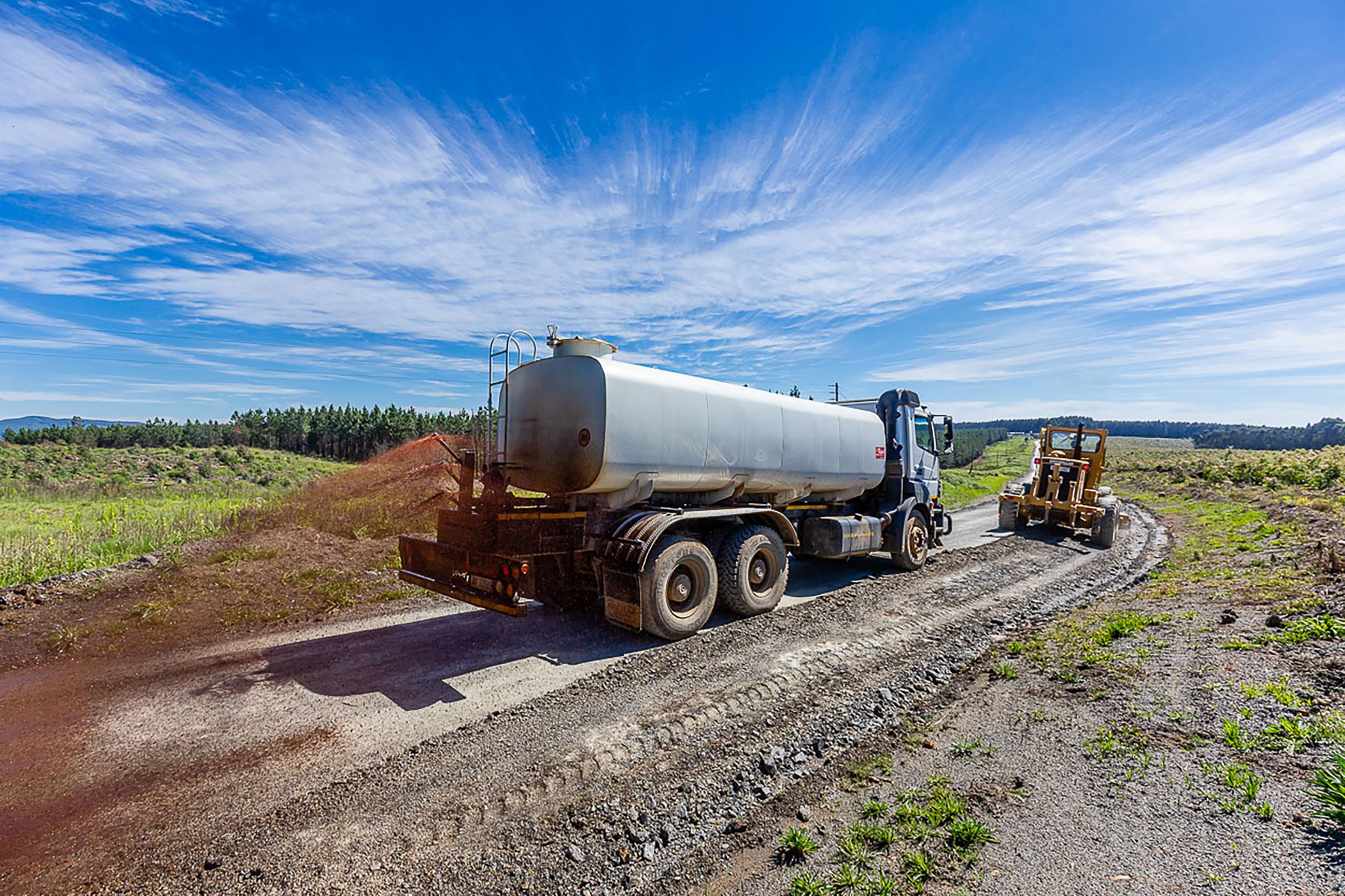
Lignosulphonates, extracted from the pulping by-products, are used in mining and road maintenance as a dust suppressant. Once sprayed onto the road, water evaporates from the lignosulphonate, and as it dries, the dust particles are trapped by the high-viscosity, naturally sticky material.
The traditional linear “take-make-waste” approach places unnecessary strain on the environment, leading to pollution, emissions, and resource depletion. Poor waste management not only impacts ecosystems but also results in financial losses and missed opportunities for repurposing valuable materials.
In contrast, circular economy is built on three key principles: designing out waste, keeping materials in use, and managing and restoring the areas from which resources are extracted. The forestry, pulp and paper industry has long embraced this approach, continuously innovating to maximise resource efficiency and minimise waste.
Circles in the Forest
South Africa's timber plantations cover 1.2 million hectares located in five of the nine provinces. Of this, 850 million trees planted over 676,000 hectares provide the wood fibre for the pulp and paper industry.
171,000 hectares of grasslands and their interconnected wetland systems. Through dedicated environmental stewardship, forestry companies play a critical role in conserving key ecosystems and protecting the threatened, endangered, and endemic species that depend on them.
Forestry’s circular approach extends beyond tree planting. After harvesting, bark, branches, and leaves remain on the forest floor, enriching the soil and providing habitats for microorganisms, insects, and birds, another way in which biodiversity is supported.
Through the cycle of photosynthesis, trees remove carbon dioxide from the atmosphere, store the carbon for energy and growth, and release oxygen. Trees also return water to the atmosphere through transpiration.
With trees capturing more carbon from the atmosphere than any other biome, plantation forestry offer a means to mitigate the impact of climate change through carbon sequestration and storage.
Pulp and paper mills also operate in a closed-loop system, maximising efficiency by reusing raw materials and resources.
Water is recirculated within processes.
Lost fibre is recovered and reused.
Spent chemicals are repurposed for energy production.
Bark, a form of biomass, is used as a fuel source to power boilers, producing steam that generates electricity.
Circling the Bin
After paper products reach consumers—whether as office paper, cardboard boxes, magazines, or newspapers – the cycle continues, with the help of waste-conscious citizens. Office paper can be printed on both sides, boxes reused for storage, and newspapers repurposed for school projects. Recyclable paper products can be separated for recycling.
Recovered paper and paper packaging is processed into new products like corrugated boxes, tissue, cereal boxes, and moulded protective packaging. Each cycle extends the lifespan of paper fibres – in some cases up to 25 times - keeping carbon in the fibres locked up for longer.
In 2023, the industry diverted 1.2 million tonnes of paper and paper packaging from landfill. With around one tonne of recyclable paper saving three cubic metres of landfill space, the environmental benefit is significant.
Paper not collected and recycled is often archived, stored in homes, or used in long-life products. Unfortunately, some paper is lost to the environment through littering, illegal dumping, or poor waste management.
The industry continues to emphasise the importance of separating recyclable materials at source (e.g. homes, businesses, schools) and keeping paper products clean and dry for effective recycling.
Circles
The industry’s circular innovation then extends beyond paper products. Wood-derived materials already play a role in all manner of things such as food, pharmaceuticals, and textiles.
Dissolving wood pulp is used in the production of textiles and sponges, as well as a stabiliser and emulsifier in foodstuffs such as yoghurt, cheese, and ice cream.
Nanocellulose can be used in cosmetics, vitamins, and low-fat foods.
Cellulose-based materials are being developed for biodegradable plastics, mosquito repellents, and controlled-release fertilisers.
Lignin, often referred to as the "glue" of the natural world, is extracted from wood during the paper manufacturing process and recovered from spent pulping liquors. It is highly versatile and widely used in agriculture, particularly in the production of compound animal feeds, where it acts as a binding agent for essential nutrients and additives.
Lignosulphonates are used in mining and road maintenance as a dust suppressant. Once sprayed onto the road, water evaporates from the lignosulphonate, and as it dries, the dust particles are trapped by the high-viscosity, naturally sticky material.
Paper sludge, another by-product of pulp and paper manufacturing, has displayed potential to produce bio-ethanol using a specialised fermentation process. Over and above reducing landfill waste,

An example of mosaic forestry, where planted trees and conservation areas create ecological corridors that safeguard wetlands, grasslands and biodiversity-rich indigenous areas.
ethanol is a versatile starting material that finds diverse application in the production of industrial chemicals, bio-based plastics and sustainable aviation fuel.
Xylitol from wood can replace sugar as a non-nutritive sweetener.
By embracing circularity, the pulp and paper sector is emerging as a key player in the transition to a low-carbon economy. The substitution of carbon-intensive materials with bio-based alternatives positions the industry as a growth sector, driving industrial decarbonisation, fostering regional job creation, and strengthening its role in a thriving circular economy. n

https://www.environment.gov.za/sites/default/files/docs/carbonsinks_southafricanatlas2017.pdf

By Luke Fraser
The Climate Change Act is now in effect in South Africa, but certain provisions have not yet gone live.
The Act, which President Cyril Ramaphosa signed into law last year, was proclaimed by the president on Monday, 17 March 2025.
The Act will enable the development of effective climate change policies and the long-term transition to a low-carbon economy and society.
The Act also aims to lay the foundation for a resilient, futurefocused and inclusive ‘green economy’.
It will also support job creation in renewable energy, sustainable agriculture, eco-tourism and other sectors.
“The Act represents a critical milestone not just for environmental sustainability, but for economic development and job creation,” said Minister for the Environment Dion George.
“We are committed to ensuring that climate action becomes a catalyst for driving economic growth, creating jobs, and building a sustainable future for South Africa.”
South Africa faces growing environmental and economic complexities as the nation’s largest insurers highlight increasing extreme weather events.
However, it must be noted that not all provisions of the Act have come into operation. Parts of sections 12 through 22, 35, 26, 27 and 30 have been deferred to a later date.
The reason for these deferrals is that these specific provisions are that the department is developing a set of regulations that will enable these provisions to be implemented.
Some of these draft regulations are at an advanced stage of development and will be gazetted for public input and comment soon, George said.
The department said it will keep the public informed of the finalisation of the regulations and the full implementation of the Climate Change Act.
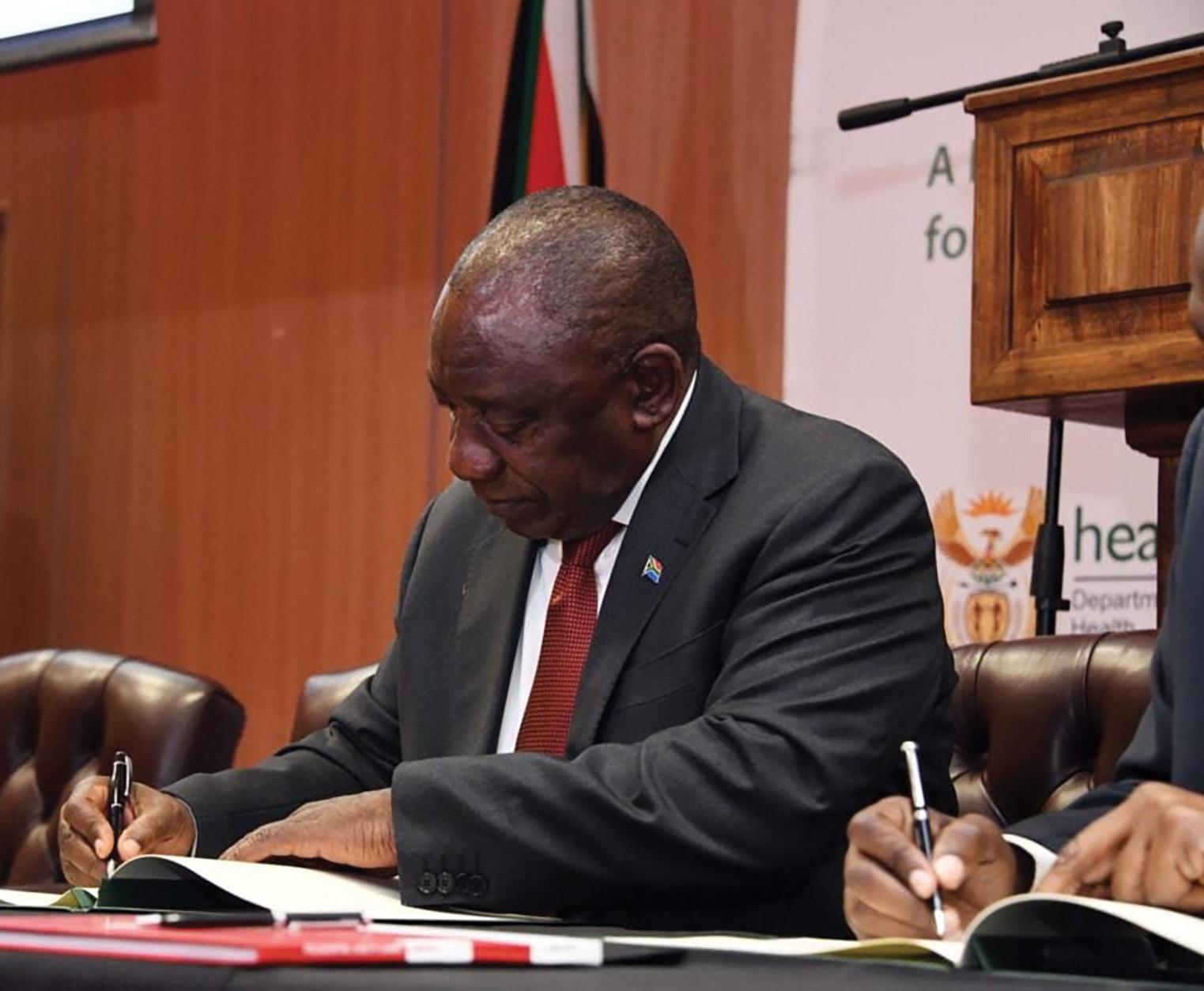
“The recent severe weather conditions that have caused havoc in different parts of the country are a stark reminder of the urgent need for decisive climate action,” said George.
The new laws also have several features the private sector should be aware of.
Law firm Bowmans’ Claire Tucker and Marga Jordaan previously said that the most important of these relates to emissions.
The Act states that the minister will need to develop the following:
• Within one year, sectors and sub-sectors emitting greenhouse gases have published emissions targets;
• Develop sector-specific emissions frameworks and targets in consultation with relevant Ministers;
• Publish a list of greenhouse gases contributing to climate change;
• Assign a carbon budget for a minimum of 15 years to entities involved in emitting listed greenhouse gases. n
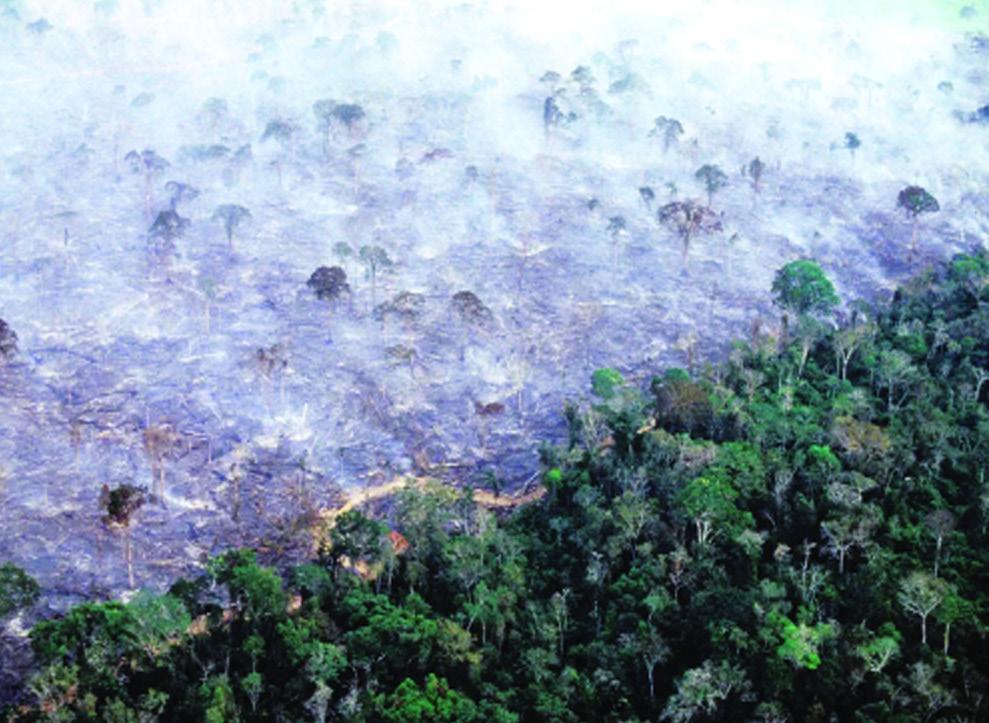
By Manish Kumar Shrivastava
The world is navigating a turbulent phase marked by environmental crises, economic volatility, and growing geopolitical rifts. As climate change intensifies and inequality widens, sustainable financehas become a critical lever for driving transformative change.
The world is at a critical juncture, facing unprecedented environmental, social, and economic challenges. Climate change, biodiversity loss, and social inequality are just a few of the pressing issues that require immediate attention. Sustainable finance has emerged as a vital tool to address these challenges.
It refers to investment decisions that consider environmental, social, and governance (ESG) factors, aiming to achieve financial returns alongside positive societal impacts. It encompasses a broad range of financial activities that support sustainable development — such as investments in renewable energy, energy efficiency, sustainable agriculture, and green infrastructure.
Partnerships play a crucial role in accelerating sustainable finance.
The Paris Agreement on climate change and the Agenda 2030 on Sustainable Development Goals (SDGs), both adopted in 2015, are the two most important global partnerships, although also very fragile, that still hold the hopes of a peaceful, equitable, and prosperous world alive. Currently, anxiety over an impending
tariff war, regional conflicts and instability, and the weakening of multilateral platforms are gripping the world.
The momentum that started in 2015 for a climate-resilient, lowcarbon, and sustainable future today faces hiccups, not only because of an unpredictable political climate but also due to predictable challenges in mobilising finance for sustainability. As a result, governments and other stakeholders are considering adopting a wait-and-watch approach.
The less-than-expected commitment to climate finance from developed countries at the 29th climate summit in Baku, Azerbaijan, and the announcement by the USA to withdraw from the Paris Agreement and other global platforms seem to have created a feeling of a standstill. However, we must remind ourselves that the sustainability agenda is not facing these dismays and pullbacks for the first time.
In the last decade, despite frequent interruptions, the leadership of sub-national governments, non-state actors, and meaningful
partnerships between countries and diverse stakeholders have not only kept the agenda of sustainability going but have also created a glimmer of hope that a sustainable future is a real possibility.
Given that the role of partnerships in mobilising sustainable finance is more critical than ever under current circumstances, there are at least three important global events in the year 2025 that offer opportunities for different stakeholders to come together and dispel the atmosphere of anxiety before the global political community meets in Belém, Brazil, for COP30.
The G20 is perhaps the most influential political partnership shaping the future direction of the global economy. After Indonesia, India, and Brazil, South Africa is the fourth developing country presiding over the G20 deliberations. For the African Union, which became part of the G20 under India’s presidency, this would be an important summit. The agenda of climate resilience and sustainable development, and the importance of scaled-up sustainability finance are unambiguous for Africa. Many African countries depend on bilateral and multilateral aid as they endure the pressures of high levels of debt-to-GDP ratio. It is an opportunity for the African nation to lead G20 as an important political partnership for sustainable finance.
The continuity of the G20 agenda in terms of MDB reforms, and inclusive just energy transition offers a real opportunity for South Africa to negotiate a bargain that can alleviate the environment of uncertainty over the future of sustainability.
Over the years, the UN Climate Week, held in New York City just before the annual UN Climate Summit, has become an important platform for governments, multilateral bodies, nonstate actors, and the private sector to announce multi-stakeholder
partnerships and initiatives for promoting climate action and sustainability. Increasingly, the announcements also address the finance question — either through direct commitments or pledges to adopt practices that enable the scaling-up of sustainable finance. Moreover, it would be a critical agenda for the UN Secretary-General to convince countries and other major actors to uphold the Pact for Future they had agreed upon at last year’s Summit for Future. It may turn out to be a historical moment that would define the course of multilateralism as a form of political partnership for a just and sustainable future.
The World Sustainable Development Summit (WSDS) held in New Delhi is the largest multi-stakeholder annual summit organised in a developing country. The WSDS is a platform to reflect on global developments, particularly the outcomes of the UN Climate Summits from a developing country perspective. While the G20 Summit and the UN Climate Week NYC will take place towards the end of 2025, WSDS will take place in March 2025 amidst the volatile political climate.
Hence, it is an important opportunity for the committed stakeholders to send strong signals in favour of sustainability, to prepare the ground for further work on partnerships during the year. Incidentally, the theme for WSDS 2025 is ‘Partnerships for Accelerating Sustainable Development and Climate Solutions.’ Scaling up sustainable finance would require a climate of stability and predictability.
Hence, governments, non-state actors, and private sector stakeholders need to utilise these events to reaffirm their commitment to sustainable finance, strengthen partnerships, and mobilise resources to support a climate-resilient, low-carbon, and sustainable future. n
(The writer is Associate Director, Earth Science and Climate Change Division, The Energy and Resources Institute (TERI). Views are personal)
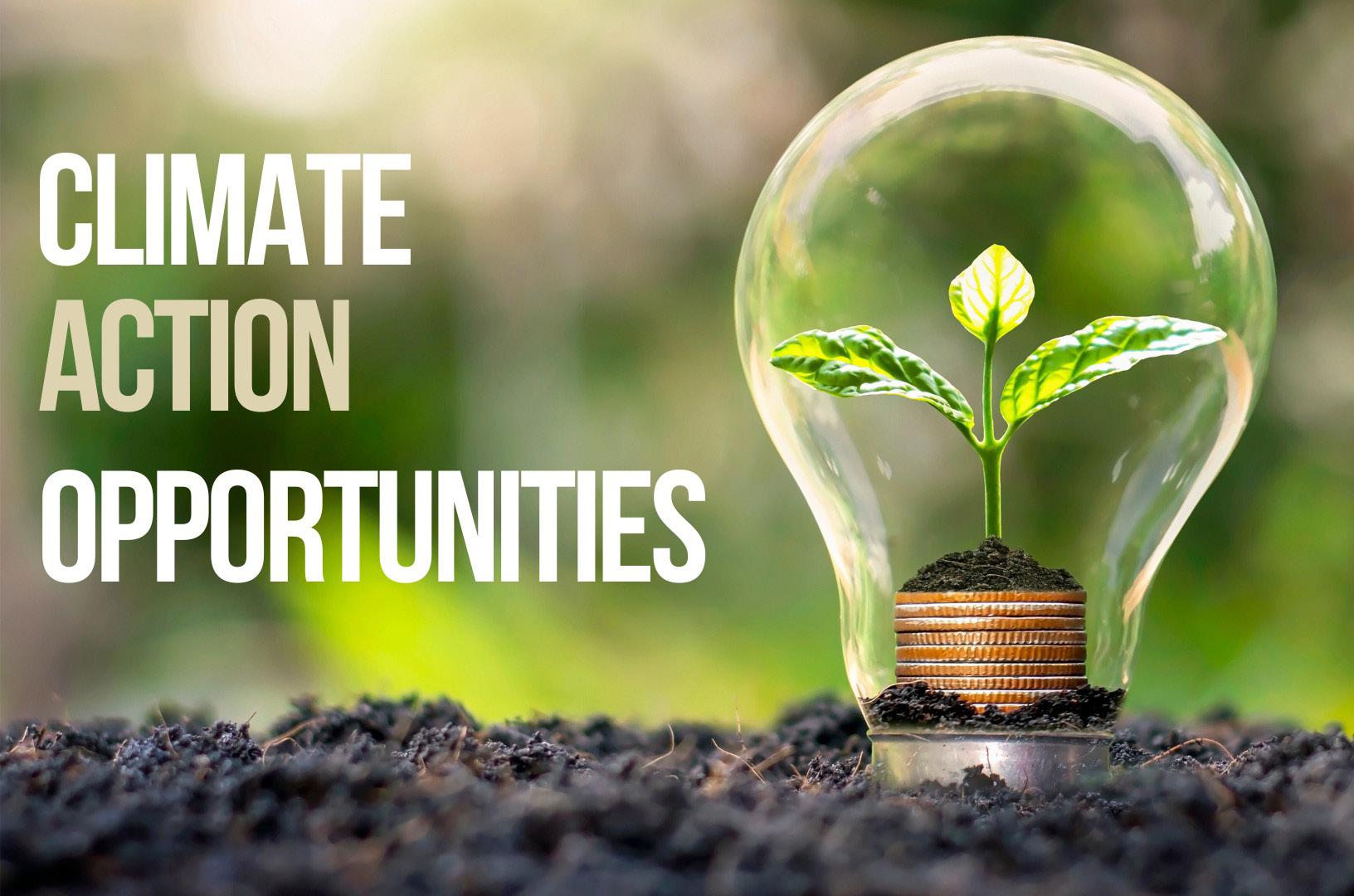
With South African industries increasingly recognizing the need to better prepare for the impact of climate change on their bottom-line and their overall sustainability strategies, the acceleration of industry’s climate resilience is becoming ever more critical.
The South African Industry Adaptation (SAIA) Project aims to strengthen the climate resilience of the country’s industries by assisting them to address barriers hampering the accelerated adoption of climate-resilient measures and technologies, and in developing desirable pathways and more sustainable practices for climate-resilient operations.
The project focuses on the water-energy nexus in the agro-processing sector. Specific activities include:
• Implementing and showcasing technology upgrades in pilot enterprises;
• Strengthening the ability to develop and finance resilient capital investment projects in the green economy;
• Stimulating and nurturing marketable green innovations; and
• Building capacity in industries, academia and the knowledge institutions to mainstream climate action.
Launched in 2022 with funding from the Government of Flanders, this three-year project is implemented by the United Nations Industrial Development Organization (UNIDO), jointly with the National Cleaner Production Centre South Africa (NCPC-SA) and the Technology Innovation Agency (TIA).
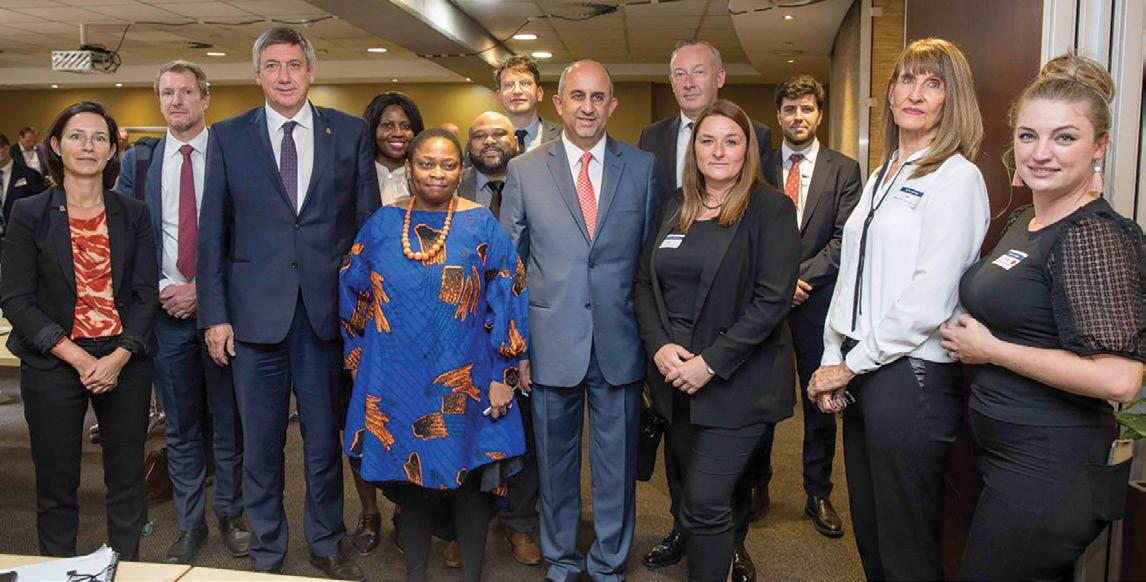
Five companies were selected as pilot projects for support following two calls for applications to identify industry partnerships. One company unfortunately had to withdraw, while Project Imifino, Thiele Holdings, Reyneke Wines, and Afrimat Hemp received support through grant cofinancing, technical assistance, or a combination of the two.
In 2020, Eastern Cape-based enterprise TaylorMade Water Solutions partnered with AB InBev to develop Imifino” (meaning “vegetables”) at the Ibhayi Brewery in Gqeberha. This high-impact demonstration project applies a circular economy approach to integrate crop production and effluent treatment to create a profitable, sustainable local value chain from brewery wastewater.
Covering an area of 2000m2, Project Imifino uses integrated constructed wetlands and raised hydroponic beds to capture the nutrient potential in the effluent from the brewery. This cleans the water so that it can be reused in the brewery (after undergoing further UF/RO treatment) and produces fresh crops instead of sludge. Some 1500 kg of fresh produce – mostly spinach - are thus grown weekly for local sale, with eight jobs created and ongoing research and collaboration opportunities.
In 2022 Imifino was selected as the first pilot project under the SAIA project. Imifino was supported in procuring a containerised ultrafiltration solution, which was supplied and co-funded by Flemish technology company Waterleau. The advanced equipment will enable the wetland to produce in excess of 250 m3 per day of effluent suitable for direct onsite re-use by the brewery, and contribute to water security for the surrounding communities.
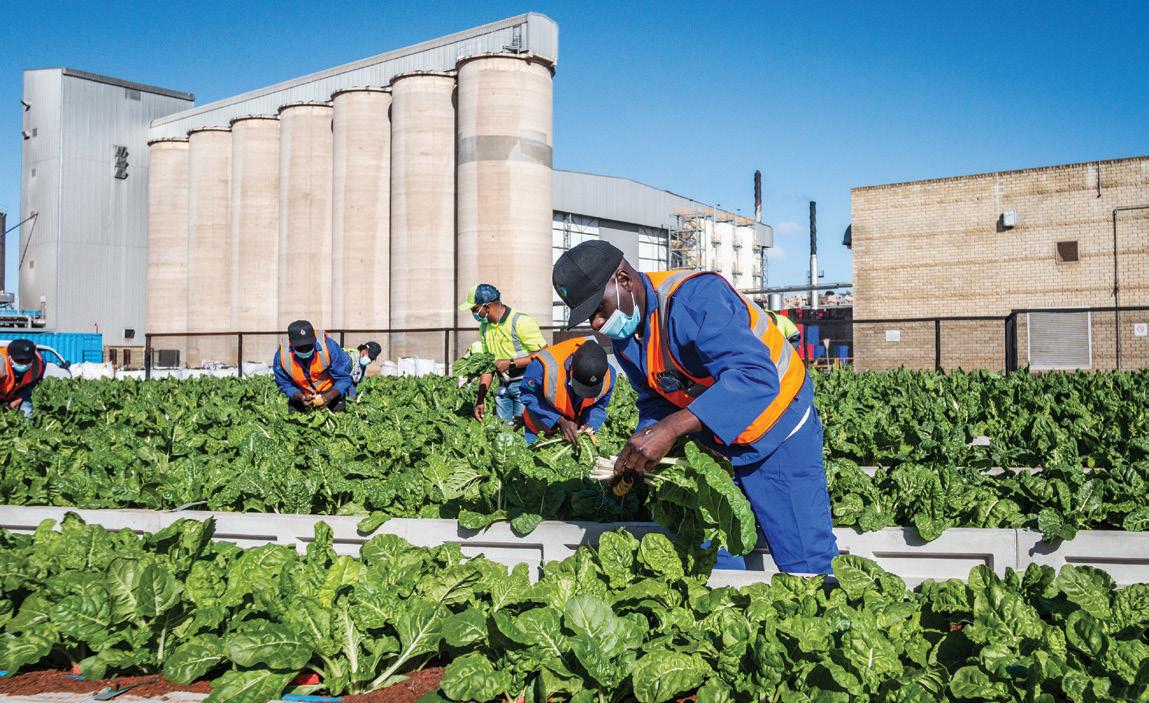
Thiele Holdings is a piggery farm in rural KwaZulu-Natal with operations running around the clock. It operates a feed mill, grows various crops and runs a Bradford cattle herd. With operations highly dependent on energy security, the farm recently installed a 120kW solar system to supplement its energy demand during loadshedding, Through grant co-financing under the SAIA project, Thiele was enabled to develop a biogas plant to complement the solar plant, thereby further reducing its dependence on the grid and increasing energy security.
Afrimat Hemp is at the forefront of commercializing hemp-based building products in Africa. Existing international decortication technologies, which are critical in scaling hemp production, are not to be suitable for Southern Africa’s conditions.
The SAIA grant co-financing supported Afrimat Hemps development of containerised decortication machines, incorporating solar and energy storage technologies. The containerized machines will facilitate decentralized, on-site hemp processing.
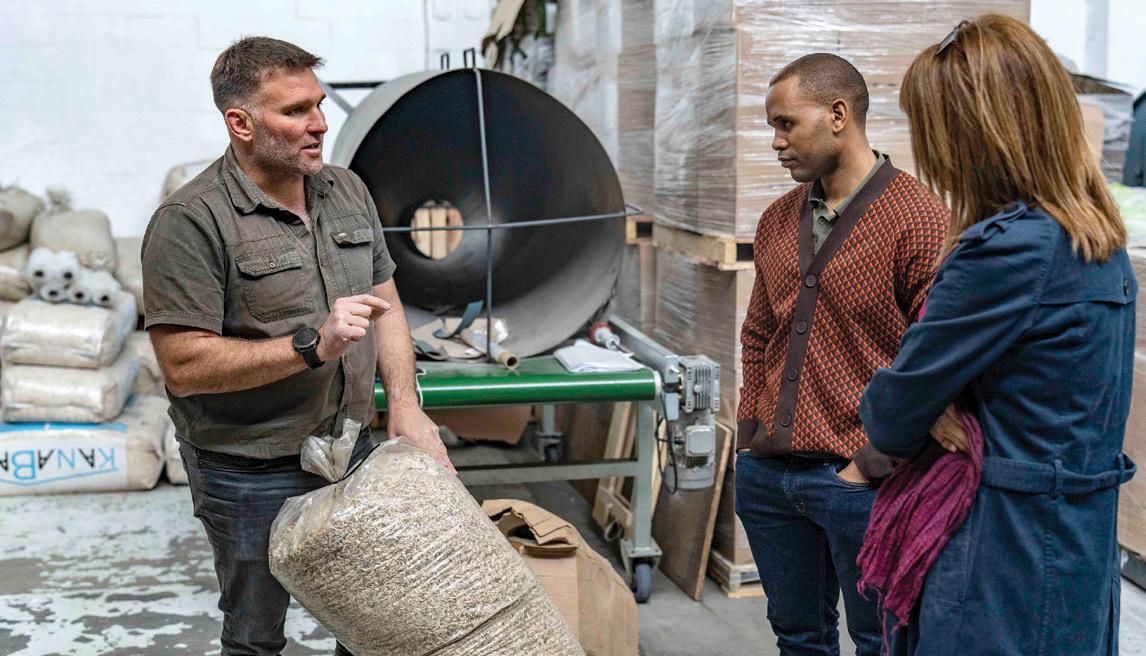
Reyneke Wines is an award-winning leader in sustainable and inclusive industrial development in the South African wine industry, located in Stellenbosch in the Western Cape. The grant support under the SAIA project contributes to a diverse range of development projects and sustainability initiatives at the winery, including the:
• Establishment of a wastewater treatment plant (bioreactor) to treat effluent from the winery for reuse;
• Purchase of a four-wheel electric vehicle to reduce the direct fuel emissions associated with daily farm and vineyard operations; and
• Purchase of an agricultural drone for spraying fungicide on the vineyard.
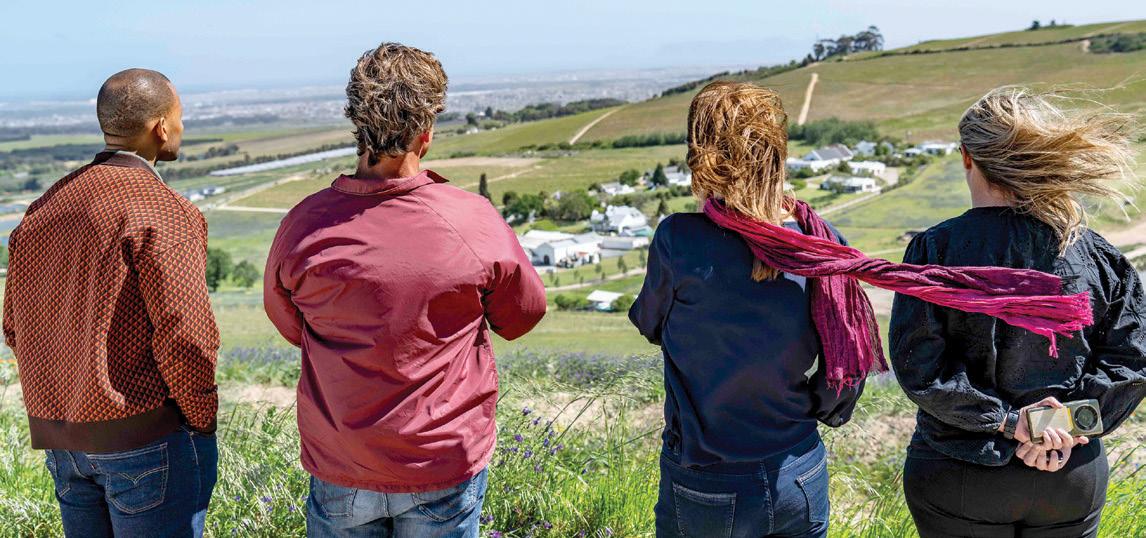
Five companies with industry-focused adaptation solutions were shortlisted for support through the TIA-coordinated Direct Enterprise Support Programme under the SAIA project. Three companies
- Kulu Eco Services, Phambili Energy and Mbali Success Foodswere subsequently selected for further customised grants and acceleration support towards market readiness.
Kulu Eco-services is an innovative waste management company tackling South Africa’s organic waste challenges. With 122 million tons of waste generated annually and only 10% recycled, landfills are strained, especially by complex organic waste streams that composting cannot handle. Kulu addresses this by transforming waste from agro-processing, industrial, and hospitality sectors into feedstocks for biogas and biofuels. Through a unique separation and processing system, the company treat waste streams that were previously untreatable, converting them into renewable energy.
Phambili Energy is a technology company with a particular focus on the development and production of bio-energy, bio-foodstuffs, bio-chemicals, and other bio-char, organic, sustainable, and renewable products. Its state-of-the-art technology produce several marketable products from various types of waste materials. These products include green bio-char coking pellets for the steel industry to replace anthracite coking coal, supercharged soil remediation bio-char, bio-char granular NPC and foliar fertilisers as well as green wood preservative products.
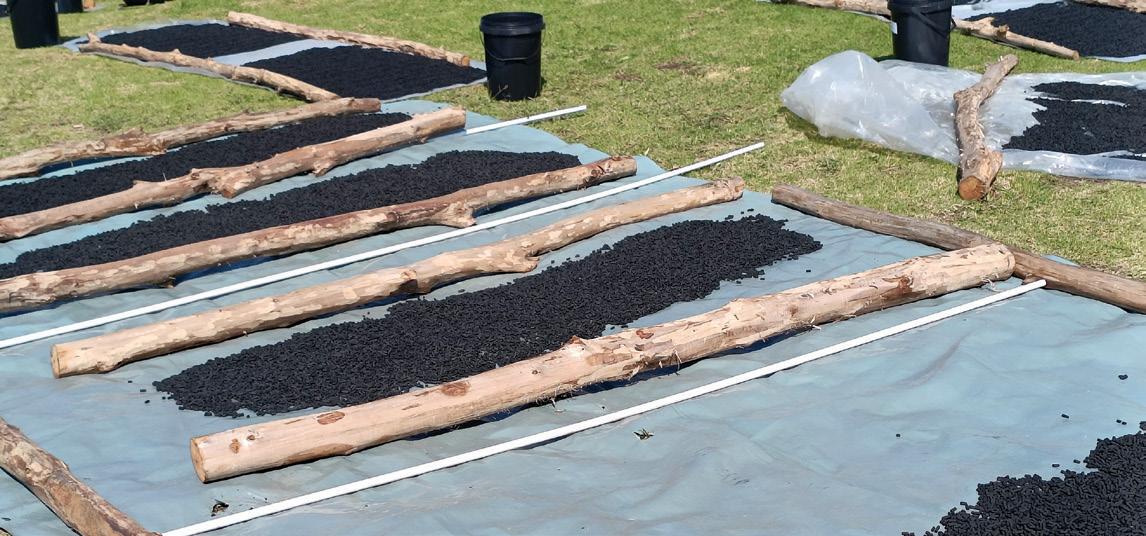
Mbali Success Foods developed innovative methods to process butternut pumpkins, offering consumers a range of non-traditional butternut products. The company applies an eco-friendly approach using biochar fertilizer to grow organic butternuts, drip irrigation powered by solar and biogas, and water-saving techniques, thereby significantly reducing environmental impact. Mbali Success Foods aims to make butternut pumpkin production and processing a sustainable, profitable business that provides top quality products, encouraging healthy living and snacking.
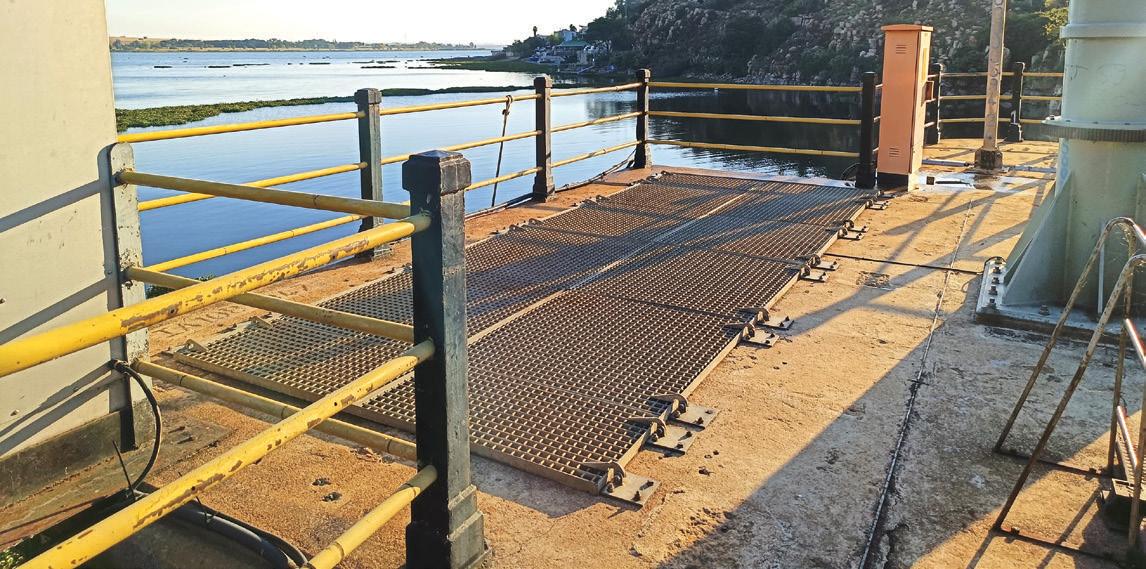
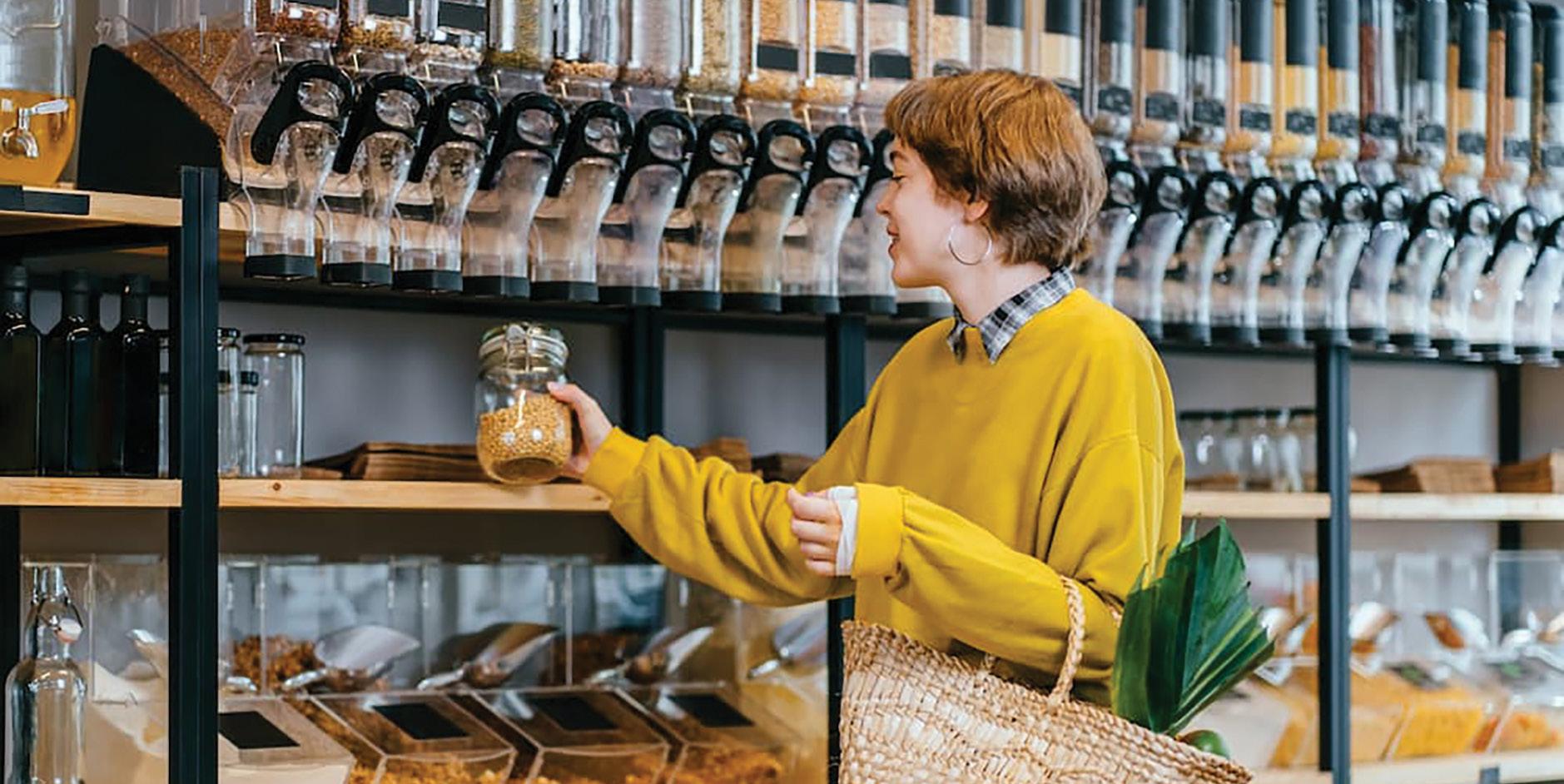
We’re witnessing a revolution. Consumers aren’t just asking for change – they’re demanding it. People across the globe are waking up to their power, refusing to support businesses that ignore the environmental and social crises we face. Sustainability has shifted from being an option to a mandate.
With 82% of shoppers preferring a brand’s values to align with their own,1 this is no fleeting trend. It’s a global movement driven by the realization that every purchase is a vote for the kind of future we want. Consumers invest in brands that stand for something beyond profit and take responsibility for their impact.
Urgency is at the core of this shift. From the climate crisis to the mountains of discarded plastic, people now understand that their choices shape tomorrow’s world. They demand transparency, accountability, and meaningful action. The question isn’t whether businesses should embrace sustainability but how long they can survive without it.
Factors influencing sustainable purchasing decisions
The shift toward sustainability is driven by deep-rooted factors that are shaping new trends. These factors reveal why more consumers are prioritizing ethics over convenience.
Environmental awareness
Growing awareness of issues like climate change and plastic pollution has pushed consumers to align their purchases with their values. Brands that reduce their environmental impact are increasingly favored.
Key facts:
• 74% of consumers say their concerns over environmental impact influence their purchasing decisions.
• 79% want an easier way to identify environmentally friendly companies.
Health and well-being considerations
Consumers are also prioritising their health. Organic, non-toxic, and eco-conscious products are more in demand as people recognize the link between personal and environmental health.
Key facts:
• 59% of consumers think that their health and well-being are strongly affected by environmental problems.
• 37% of consumers who plan to buy more environmentally sound products say that it will positively impact their physical health.
Ethical responsibility
Ethical purchasing has become a powerful driver as consumers increasingly care about where their products come from, how they’re made, and the working conditions behind them. Issues like fair trade, human rights, and social justice are central to the rise of conscious consumerism.
Key facts:
• 88% of consumers prioritise buying from companies that practice ethical sourcing.
• 64% of Gen Z consumers stated they would stop purchasing from a company if it was linked to unethical suppliers.
Consumer trends and demographics
Key demographics and evolving trends in purchasing power drive the shift toward sustainable consumer behavior.
Millennials and Gen Z are driving change
Millennials and Gen Z prioritise sustainability and transparency more than any other generation. Studies show that 60% of Millennials and 59% of Gen Z are willing to pay extra for sustainable products and services. Moreover, 81% of Millennials and 79% of Gen Zs believe businesses could and should do more to enable consumers to make more sustainable purchasing decisions.
Income and age affecting sustainable shopping
While younger generations are vocal advocates for sustainability, income and age significantly influence purchasing behaviour. Higher-income consumers are generally more likely to spend on sustainable products, while affordability remains a barrier for lower-income segments. However, increased sustainability awareness is broadening access, with four out of ten lowerincome respondents reporting they’ve paid a premium for ecofriendly products.
The demand for sustainability is global, but its intensity varies across regions. Research shows that 79% of consumers in fastgrowing markets like China, India, and Indonesia are concerned about environmental sustainability, compared to 55% in developed markets like the US and Europe.8 This highlights how emerging markets are increasingly focusing on sustainability, driving the shift in global momentum for eco-friendly products.
Embracing sustainability offers brands significant benefits, from increased customer loyalty to growth in new markets.
Competitive advantage
Brands that prioritize sustainability gain a competitive edge. Recent research reveals that sustainability-marketed products enjoy a price premium of nearly 28% vs. conventionally marketed counterparts. As a result, the percentage of new products that incorporate sustainability benefits has increased every year since 2017.

Enhanced brand loyalty
Brands committed to sustainability often enjoy increased loyalty, as consumers gravitate toward companies with transparent and accurate sustainability claims. In fact, 69% of consumers are more likely to repeat purchases from a brand that uses ecofriendly packaging, highlighting the direct relationship between sustainable packaging and consumer loyalty.
New market access
Sustainability unlocks new markets and attracts conscious consumers, younger generations, and high-income shoppers. Companies with a clearly defined purpose are 50% more likely to expand into new markets, with 58% experiencing 10% or more growth in the last three years – outpacing those without a defined purpose.
While sustainability is gaining momentum, several challenges hinder its broader adoption across consumer segments. However, implementing the right strategies enables brands to overcome these hurdles and drive growth while fostering customer loyalty.
Cost and affordability
Sustainable products often come with higher prices, which can be challenging for consumers feeling the pinch of rising costs. Yet, despite financial pressures, 80% of consumers are willing to pay more for eco-friendly options.
Brands can capitalize on this willingness by adopting a strategy of transparent cost communication. Clearly explaining where profits go – whether to support communities, fund environmental initiatives, or invest in sustainable sourcing – allows brands to
build deeper trust with consumers. This approach shows that sustainable products aren’t just about purchasing goods but about contributing to positive change for the people and the planet.
A YouGov survey showed that 55% of global consumers are skeptical about brands’ sustainability claims.17 To overcome this, brands must prioritize transparency and authenticity in their operations. One effective solution is partnering with Plastic Bank, a social fintech that empowers vulnerable communities to exchange discarded plastic for money and social benefits.
Plastic Bank’s proprietary blockchain platform enables a fully traceable recycling process, secures income for collection community members, and ensures audit-ready impact reporting. Every exchange is recorded through its blockchain, from registered collection members and collection branches to processors who recycle and ship the materials for manufacturing. This level of transparency and traceability helps brands validate their sustainability efforts, build consumer trust, and make a genuine impact on reducing plastic pollution and helping end poverty.
Lack of information on sustainability
44% of global consumers want to make eco-friendly choices but feel uninformed about how their purchases impact the environment.18 Brands can bridge this gap by fully communicating their sustainability efforts. However, they must be cautious about overpromising or making false claims, as 77% of consumers say they would stop supporting brands guilty of greenwashing. It is crucial to provide verifiable information to guide shoppers toward more sustainable choices.
Several forward-thinking brands have successfully integrated sustainability into their business models by partnering with Plastic Bank through its Impact Subscription, which funds global plastic collection, empowers communities, and provides businesses with the tools to communicate their environmental and social impact.
Currensea, a payment platform, enables consumers to link everyday purchases directly to environmental impact. Through its partnership with Plastic Bank, Currensea allows users to fund plastic collection with every transaction, seamlessly integrating sustainability into daily life. This approach has enhanced brand loyalty and positioned Currensea as a leader in purposeful innovation.
Hive Cleaning, a certified B Corp, has made sustainability central to its operations. Hive Cleaning demonstrates transparency in its sustainability reporting by leveraging Plastic Bank’s blockchain platform and offsetting unavoidable plastic use. This partnership has helped Hive Cleaning boost revenue, strengthen customer loyalty, and align its brand with circular economy principles.
Reckitt, a global leader in consumer goods, achieved impressive results by clearly communicating its sustainability efforts in its product promotions. Through online campaigns, Reckitt saw a 110% sales uplift and attracted 56-66% new customers, showcasing how sustainability marketing drives business success and meaningful impact.
As consumer demand for sustainability rises, businesses that fail to embrace eco-friendly practices risk being left behind. Companies like Patagonia, IKEA, Natura, and Plastic Bank partners such as Currensea, Hive Cleaning, and Reckitt have demonstrated that purpose-driven strategies meet consumer demands and create lasting, meaningful change. The future belongs to brands prioritizing people and the planet, proving that sustainability and profitability can work hand in hand.
Visit www.plasticbank.com/small-business to begin your sustainability journey with Plastic Bank. n
How Fibre Circle is driving broad-based, inclusive, scalable change in the paper and packaging industry.

The paper and packaging industry is well positioned to further South Africa’s sustainability goals, thanks in large measure to the well-known producer responsibility organisation Fibre Circle. Green Agenda asked CEO Edith Leeuta to talk us through some of the organisation’s recently initiated projects and programmes.
A major milestone for Fibre Circle was the commencement of the South African Repulpability and Recyclability Standard for fibre-based packaging, which sets clear guidelines for the recyclability of fibre-based packaging. This development is set to have a major impact on the industry.
Leeuta explains, “The South African Repulpability and Recyclability Standard represents a groundbreaking achievement for the paper packaging sector. It provides scientifically backed, local guidelines that align with international standards while being tailored to our specific infrastructure and market needs.
“This development is crucial as it will help packaging manufacturers design for recyclability, optimize material recovery, and reduce contamination within the recycling streams. Ultimately, it will enhance the circular economy by streamlining the process
of reintegrating fibre-based packaging into the value chain, decreasing landfill waste, and promoting sustainable practices in both production and recycling.”
An important goal is to help provide business growth opportunities and improve market access for small and emerging recyclers. To this end, Fibre Circle has expanded its successful SMME Development Programme, which has already made a significant different to up-and-coming recycling entrepreneurs.
“Fibre Circle’s SMME Development Programme plays a pivotal role in strengthening small and emerging businesses in the recycling sector,” says Leeuta.
“By offering tailored business development support, mentorship, and creating access to industry stakeholders, this initiative is designed to help these businesses grow, formalize, and scale their operations. Additionally, it helps them tap into larger, more lucrative markets, thus fostering economic inclusion, creating jobs, and reinforcing the resilience of the circular economy. This initiative serves not only to empower entrepreneurs but also to improve material collection efficiency across the sector.”
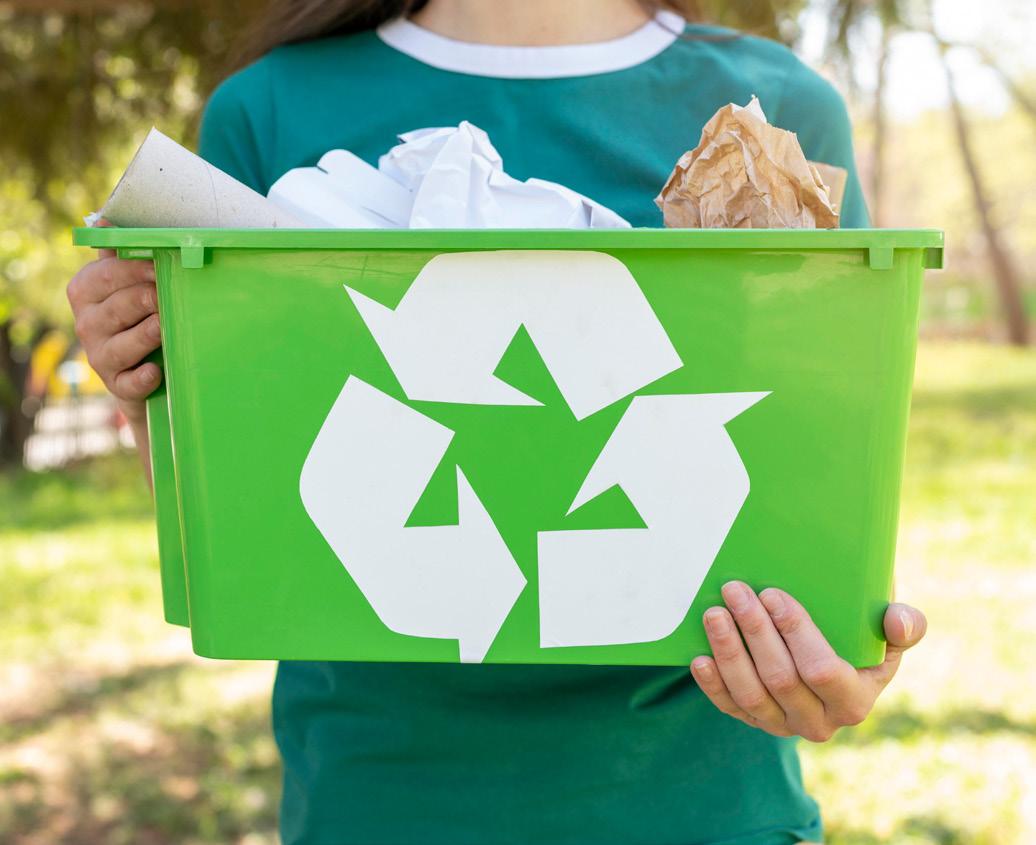
Over and above small business development, Fibre Circle is seeking to upscale its community engagement initiatives as a whole. Recently, the organisation launched a partnership with the Good Work Foundation (GWF) to this end.
“Fibre Circle's community engagement initiatives, such as the Zithande Mzansi programme, are at the heart of our strategy to promote sustainable waste practices and environmental stewardship,” says Leeuta.
“These initiatives range from educational school programs to public clean-up events and collaborations with municipalities and local community groups. Our partnership with GWF expands our reach to underserved communities.
As we continue to strive towards a more sustainable future, I would like to encourage our members to remain committed to the circular economy’s core principles.
“GWF’s network of learning hubs provides a platform for us to educate young people and adults on the importance of waste management and the circular economy.
“Scaling this engagement is vital to creating a long-lasting cultural shift towards sustainability, equipping more people with the knowledge and skills to actively participate in environmental protection.”
Among the challenges Fibre Circle is facing are inconsistent infrastructure and accessibility, which are a hindrance to buy-back centre integration and waste collection strategy. To overcome these obstacles, the organisation has implemented the GIS Mapping Project.
“Informal and small-scale collectors often face logistical challenges like high transportation costs and a lack of real-time data regarding material availability and collection points,” says Leeuta.
“The GIS Mapping Project is designed to overcome these obstacles by creating a digital map of buy-back centres, material recovery facilities, and critical collection points. This tool allows for the optimization of collection routes, reducing inefficiencies in transportation and
enhancing collaboration among stakeholders. Ultimately, it offers a data-driven approach to improving the overall efficiency of recycling operations and increasing recovery rates.”
Another challenge is posed by intractable materials. Here, innovation plays a key role.
Leeuta offers, “Some materials, particularly multi-layered and coated papers, are difficult to recycle due to their complex composition. These materials often require specialized processes to separate the fibre from other components, presenting challenges in both material recovery and quality.
“Fibre Circle is working on several innovative solutions, such as developing local recycling capabilities for cement sacks and improving the recycling process for label-backing paper.
“These initiatives, done in collaboration with industry stakeholders like Twinsaver, aim to increase the recyclability of challenging materials and foster more sustainable circular economy solutions.”

Looking ahead, Leeuta offers a message of support and encouragement for the organisation’s registered producers.
“As we continue to strive towards a more sustainable future, I would like to encourage our members to remain committed to the circular economy’s core principles.
“The work we are doing is vital for South Africa’s environmental future, and each contribution counts in driving systemic change. Let us continue to innovate, collaborate, and push the boundaries of what we can achieve together.
“In 2025, let’s work even harder to close the recycling loop, create more opportunities for job growth, and ensure that every step we take is contributing to a cleaner, greener South Africa.” n

South Africa’s plastic packaging industry and the European Union’s new packaging regulations
THE European Union’s Packaging & Packaging Waste Regulation (PPWR) has introduced new regulations for plastic packaging that could have significant ripple effects on South Africa’s plastics and packaging sectors.
As global sustainability requirements evolve, South African packaging manufacturers must adapt to remain competitive, particularly in export markets.
The PPWR mandates that all packaging must be recyclable by design and practice by 2030. Fortunately, South Africa’s plastics industry, especially for export-oriented businesses, has already made substantial progress in meeting these recyclability standards.
According to Anton Hanekom, executive director at Plastics SA, “South Africa has made great strides in designing for recyclability, and our local packaging designers, brand owners, and retailers are consciously developing products with end-of-life considerations in mind.”
A key requirement of the PPWR is the gradual increase of postconsumer recycled (PCR) content in plastic packaging from 2030 onwards. South Africa has already achieved considerable progress in this area, with PET bottles already successfully being recycled back into bottles, trays and punnets used for food contact.
Hanekom acknowledges the challenges, stating, “While South Africa is making strides in recycling PET bottles, scaling up food-grade PCR production and enhancing recycling capabilities remain areas that require further investment. Ongoing investment in research and development (R&D) is critical to overcoming these hurdles and expanding the use of PCR across various packaging formats”.
A greater focus for South Africa needs to be fixing our broken waste management system.
As Hanekom explains: “We can (and do) have packaging products that are 100% designed for recycling. However, it is of little use if it is not picked up by waste pickers or collected by waste management companies. To this end Plastics SA has been engaging with local and national governments to educate them about proper waste management and encourage improved collection”.
The PPWR also introduces eco-modulated EPR fees, which incentivise sustainable designs and penalise non-compliance. Hanekom highlights that South Africa is beginning to see the benefits of its own EPR system, with Producer Responsibility Organisations (PROs) managing funds to enhance collection and recycling efforts.
“EPR has led to a notable increase in the collection and recycling of post-consumer packaging, alongside growing consumer awareness. As we refine the system, annual fee reviews ensure that lessons are incorporated to enhance collection and recycling efficiency.”
Non-compliance with the PPWR presents a major risk for South African exporters of plastic packaging or packaged products destined for the EU, potentially leading to market restrictions. To address this, the local plastics industry is proactively enhancing product design and increasing recycled content.
The PPWR is widely regarded as a catalyst for innovation, driving the development of circular economy solutions. South Africa’s plastics industry can seize this opportunity to innovate in areas such as advanced recycling technologies, mono-material packaging solutions, and 100% recyclable designs.
South Africa’s plastics industry is well-positioned to align with the EU’s new packaging regulations through ongoing investments in design, recyclability, and sustainability initiatives. With continued collaboration and innovation, the industry can not only comply with international regulations but also lead the way in sustainable packaging solutions for the future. n
Efforts to include recycled content where possible have seen significant investment in infrastructure, technology, and expertise. South African manufacturers are successfully exporting plastic packaging to international clients, demonstrating compliance with global standards.
For more information visit www.plasticsinfo.co.za.
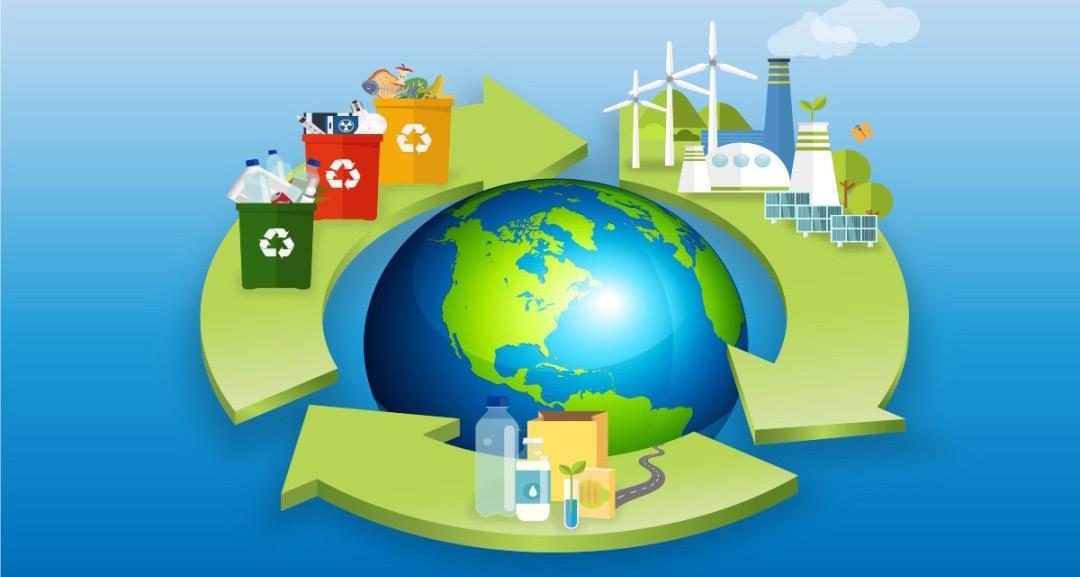
The revolutionary journey of clean technology over the last ten years is described in this study, which also identifies the key innovations that have changed the face of sustainability and helped us move toward a cleaner, greener future. The study delves deeply into several clean technology concepts, such as green building solutions, waste management, renewable energy, and transportation. It focuses at how cutting-edge technology have transformed the energy industry and increased the efficiency and accessibility of renewable energy sources like solar and wind power. It also examines the remarkable advancements in waste management, highlighting state-of-theart recycling and waste-to-energy technology that are lowering landfill waste and mitigating environmental damage.
The study also highlights ground-breaking developments in transportation, such sustainable fuels, and electric cars, which are changing the automotive sector and lowering carbon emissions. It also highlights the considerable advancements in green building techniques, showcasing intelligent systems, sustainable design principles, and energy-efficient materials that are transforming the building industry. This study analyses these incredible advancements in clean technology to show what further possibility there is to build a sustainable future. It aims to inspire people, entities, and decision-makers to adopt these technologies and strive toward a future in which pollution yields to advancement, creating the way for a more inhabitable, healthy, and sustainable earth.
Clean technology, or “cleantech,” has become a revolutionary tool for solving today's most important environmental problems. The need to find creative ways to lessen our carbon footprint and build a more sustainable future has grown as the negative consequences of pollution and climate change become more widely acknowledged In the last ten years, clean technology has made significant strides that have changed the way we produce energy, handle waste, and construct infrastructure. This study aims to give a thorough summary of the most significant advances in clean technology during this time, highlighting advancements in waste management, renewable energy, transportation, and green building techniques
Waste management techniques have revolutionised themselves concurrently. The circular economy strategy has taken the place of the conventional linear paradigm of “take, make, dispose,” stressing waste minimization and resource efficiency. Recycling and waste-to-energy conversion are two examples of sustainable waste management techniques that are gaining popularity. Modern recycling techniques have made it possible to recover and repurpose valuable materials from waste streams, which has minimised landfill waste and the need to extract raw resources. Technological developments in waste-to-energy have made it possible to turn organic waste into clean energy, solving the problems of waste management and energy production at the same time.
Clean technology breakthroughs have not occurred in a vacuum; legislative frameworks and financial incentives have helped to make them possible. Governments all over the world have put policies in place to encourage the use of clean technology. These include limits on emissions, carbon pricing schemes, and subsidies for renewable energy. Additionally, the business sector has been essential in funding clean technology initiatives and making investments in research and development, International cooperation and accords, including the Paris Agreement, have emphasised the world's commitment to fighting climate change and hastening the shift to a low-carbon economy even more.
These advancements in clean technology have an effect that goes beyond just lowering carbon emissions. They support the creation of jobs in the clean energy industry, the preservation of natural resources, and better air and water quality. Through the reduction of the environmental effects of human activity, clean technology creates the conditions for future generations to live more robust and sustainable lives.
construction of environmentally friendly transportation infrastructure contribute to the reduction of air pollution and the advancement of eco-friendly urban areas. These kinds of projects, which encourage low-emission transportation systems and lessen the carbon footprint associated with commuting, are in line with the larger goals of green development. n

On 20 May 2025, MetPac-SA, South Africa’s Producer Responsibility Organisation (PRO) for metal packaging, proudly hosted a landmark event at the GeT Metal Group’s state-of-the-art aluminium recovery and re-melting foundry in Cape Town. The “Metal Packaging Recovery Process Appreciation Day” welcomed a delegation of MetPac-SA’s members for an eyeopening, behind-the-scenes experience of how the humble used beverage can (USB) is recycled into aluminium ingots, ready for another aluminium product, a perfect example of the circular economy in action.
This immersive event offered attendees a first-hand view of the complete post-consumer aluminium packaging recovery process. From the delivery of compacted, baled used cans to their densification and eventual re-melting at temperatures exceeding 680°C, guests witnessed the incredible journey of aluminium as it is reborn into pristine ingots. These ingots are destined either to become new cans or to contribute to other premium metal manufacturing applications across diverse industries.
Attendees also had the opportunity to observe rigorous quality assurance procedures, including advanced metallurgical laboratory analyses. These tests ensure that the re-melted aluminium meets strict specifications, reaffirming aluminium’s status as one of the most sustainable materials, finitely recyclable without any loss of quality.
Mr Ebrahim Khan, Co-Founder of GeT Metal Group, delivered an informative and passionate presentation on the company’s circularity-focused business model and their commitment to deploying globally benchmarked, energy-efficient re-melting technologies.
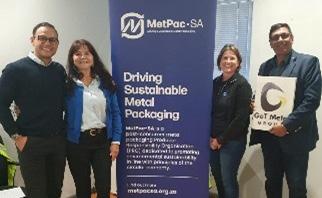
“Our mission has always been rooted in circularity, Khan noted. “It’s not just about recycling cans, it’s about transforming mindsets around resource use and showcasing how industry can lead the way in environmental sustainability” The event also featured a keynote address by Dr Kishan Singh, CEO of MetPac-SA, who outlined the organisation’s Extended Producer Responsibility (EPR) progress and strategic roadmap.
“Today’s experience is a powerful reminder of the impact of collaboration,” said Dr Singh. “MetPac-SA is fully committed to meeting and exceeding the legislated EPR goals. Our strategic partnerships innovators like GeT Metal Group are vital in driving South Africa’s metal packaging circular economy. Together, we’re not just closing the loop, we’re creating a robust, sustainable system that benefits people, industry, and planet.”
The Appreciation Day promoted meaningful dialogue among stakeholders and provided a valuable platform for learning, networking, and reaffirming commitment to environmental stewardship. It also highlighted the importance of continued investment in technologies and strategic partnerships that uphold the principles of the circular economy.
MetPac-SA extends sincere gratitude to the GeT Metal Group management team for their warm hospitality and tireless efforts in making the event a success. To all the members who participated, your presence and engagement help move the industry forward in sustainable and innovative ways.
For more information, visit www.metpacsa.org.za
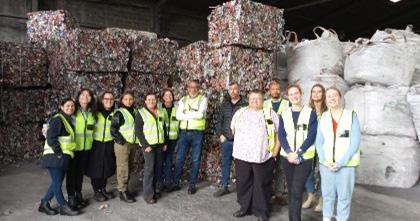

The Producer Responsibility Organisation (PRO) for metal packaging in South Africa, has announced significant progress in achieving, and in some cases, exceeding the Government’s Extended Producer Responsibility (EPR) targets set by the Department of Forestry, Fisheries and the Environment (DFFE) for Year 3 of implementation.
Now entering its fourth year under the EPR regulations, MetPacSA has strengthened its position as a key player in the local circular economy by advancing recycling rates, improving data management tools, and supporting inclusive and sustainable development initiatives.
“We are immensely proud of the progress made in Year 3. These results reflect the metal packaging industry’s commitment to environmental stewardship and the power of collaboration between producers, government, and communities,” said Dr Kishan Singh, CEO of MetPac-SA. “Our achievements clearly demonstrate that when producers are held accountable and given the right tools, meaningful progress is possible.”
The metal packaging sector, comprising aluminium and tinplate (ferrous) substrates, plays a vital role in the South African economy. It includes local producers, brand owners, manufacturers of filled and empty packaging, and importers of both packaging and raw materials.
The industry operates under three core supply models for aluminium packaging, i.e. conversion from imported raw material, importation of filled products, and local manufacture using locally available aluminium. In contrast, tinplate packaging faces more complex challenges, with raw material no longer supplied locally and therefore fully dependent on imports.
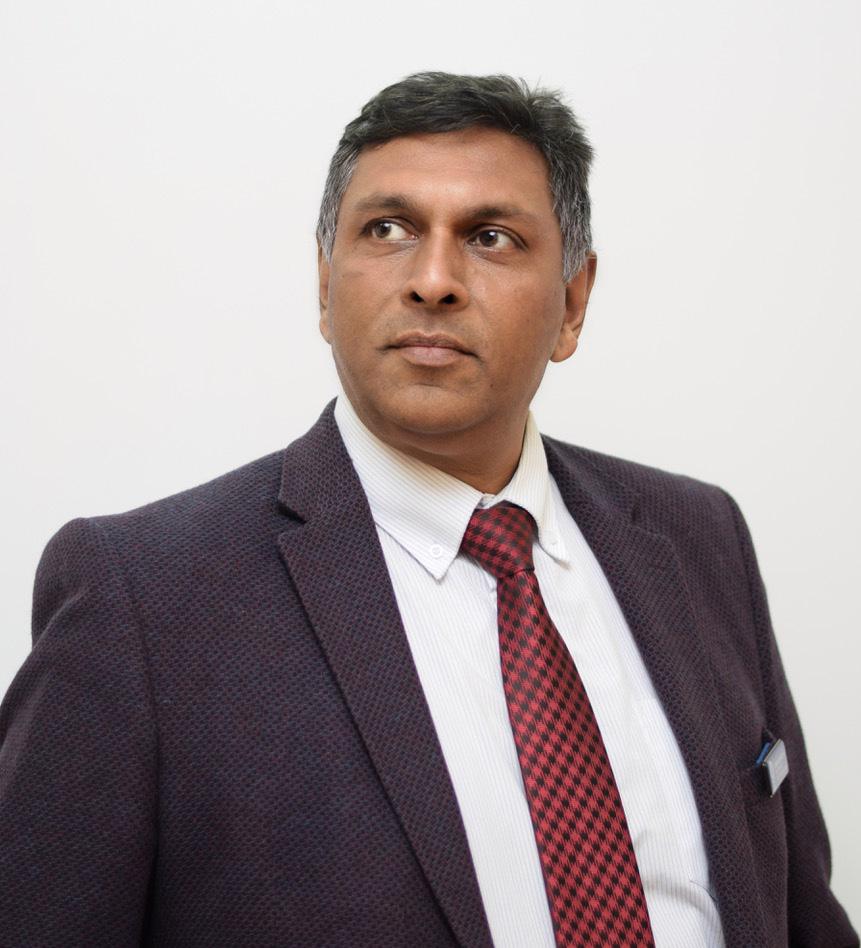
Despite these challenges, the industry continues to respond to growing consumer demand for sustainable packaging and increasing legislative pressure to reduce environmental impact.
Using its newly developed advanced data dashboard, MetPac-SA consolidated member declarations and post-consumer recovery data to track real-time progress and identify opportunities for improved collection and recycling.
Aluminium Used Beverage Cans (UBCs) –
Representing 54% of declared tonnage:
- Recycled Content: Target 32% | Achieved 47%
- Collection Rate: Target 66% | Achieved 77%
- Recycling Rate: Target 33% | Achieved 61%
- Energy Recovery/Exports: Target 33% | Achieved 75%
Tinplate (Ferrous) –
Representing 43% of declared tonnage:
- Collection Rate: Target 58% | Achieved 61%
- Recycling Rate: Target 55% | Achieved 63%
MetPac-SA also tracks key performance indicators against “aluminium other” packaging (aerosols, foil, pie trays, etc.) which represents approximately 3%, by tonnage, of its member’s annual declarations. MetPac-SA’s performance in this category did not meet EPR targets due to inherent post-consumer collection challenges, signalling an area of focus for EPR Year 4.
According to Dr Singh, “Our success with aluminium UBC cans and tinplate recycling shows that the right strategic partners have been selected, and the right post-consumer packaging collection systems are in place. We remain committed to continual improvement across all metal packaging streams.”
MetPac-SA’s enhanced data systems are now being used for trend analysis and scenario planning, allowing more informed and responsive strategy development for future EPR compliance.
Other notable achievements include:
• Student research campaign involving 28 students from five South African universities, contributing to both skills’ development and consumer insights. Actions stemming from the recommendations are currently in progress targeting completion by Q4 of 2025.
• Municipal engagement through the PRO Packaging Alliance in areas like Saldanha and Swellendam, which led to the creation of 10 temporary jobs and improved collection infrastructure.
In its fourth year of implementation, MetPac-SA is prioritising:
• Waste Picker Integration: Led by Dr Singh, the organisation is actively involved in formalising the national registration and service fee structures of waste pickers through SAWPRS 2.0.
• Municipal Support: Expanding cooperation with local authorities to improve collection networks and infrastructure.
• Enterprise Development: Promoting community-led recycling projects to support small businesses.
• Advanced Data Analytics: Leveraging digital tools to enhance reporting, monitoring, and impact measurement.
“We are committed to a truly inclusive circular economy that benefits all South Africans. By investing in people, data, and partnerships, MetPac-SA will continue leading the charge towards a cleaner, more sustainable packaging industry,” Dr Singh concluded. n
For more information, visit www.metpacsa.org.za
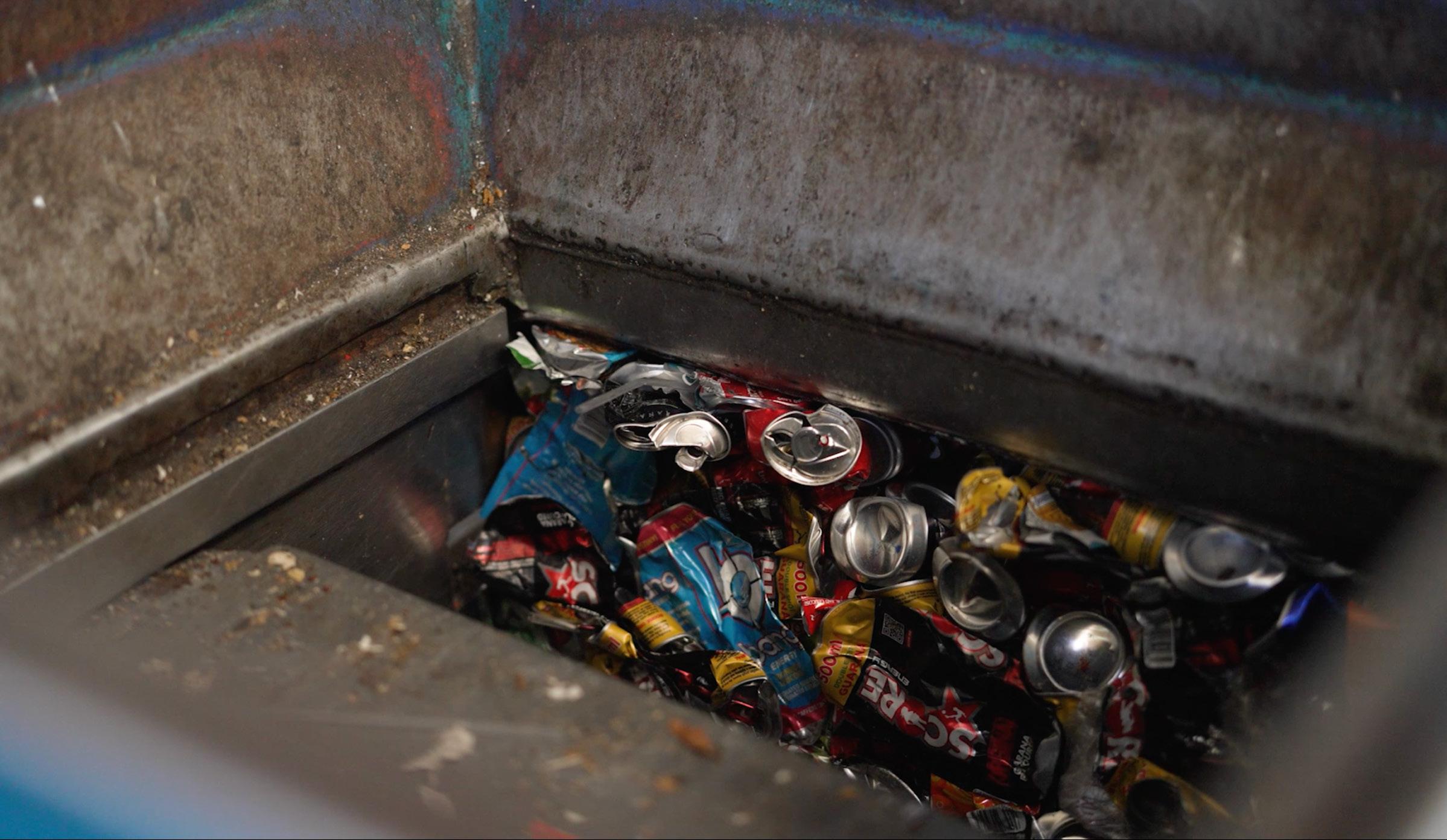

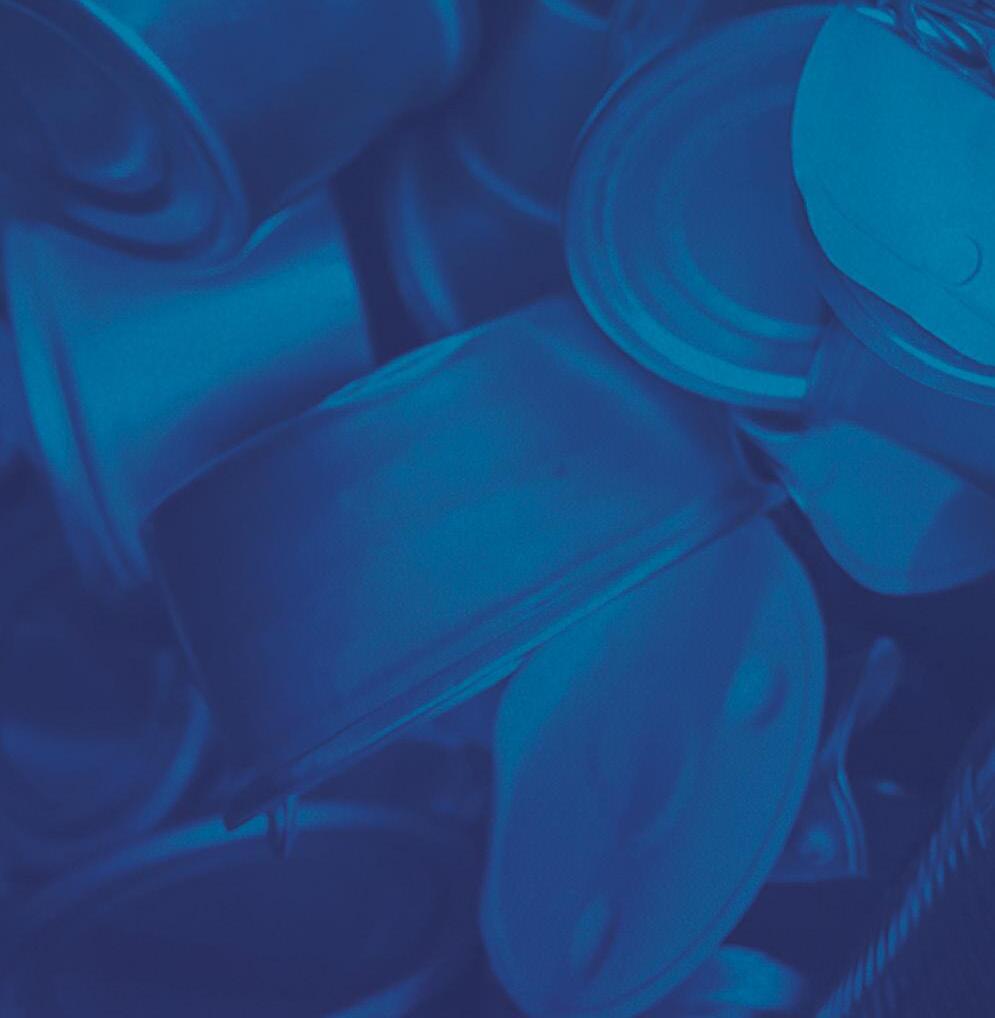

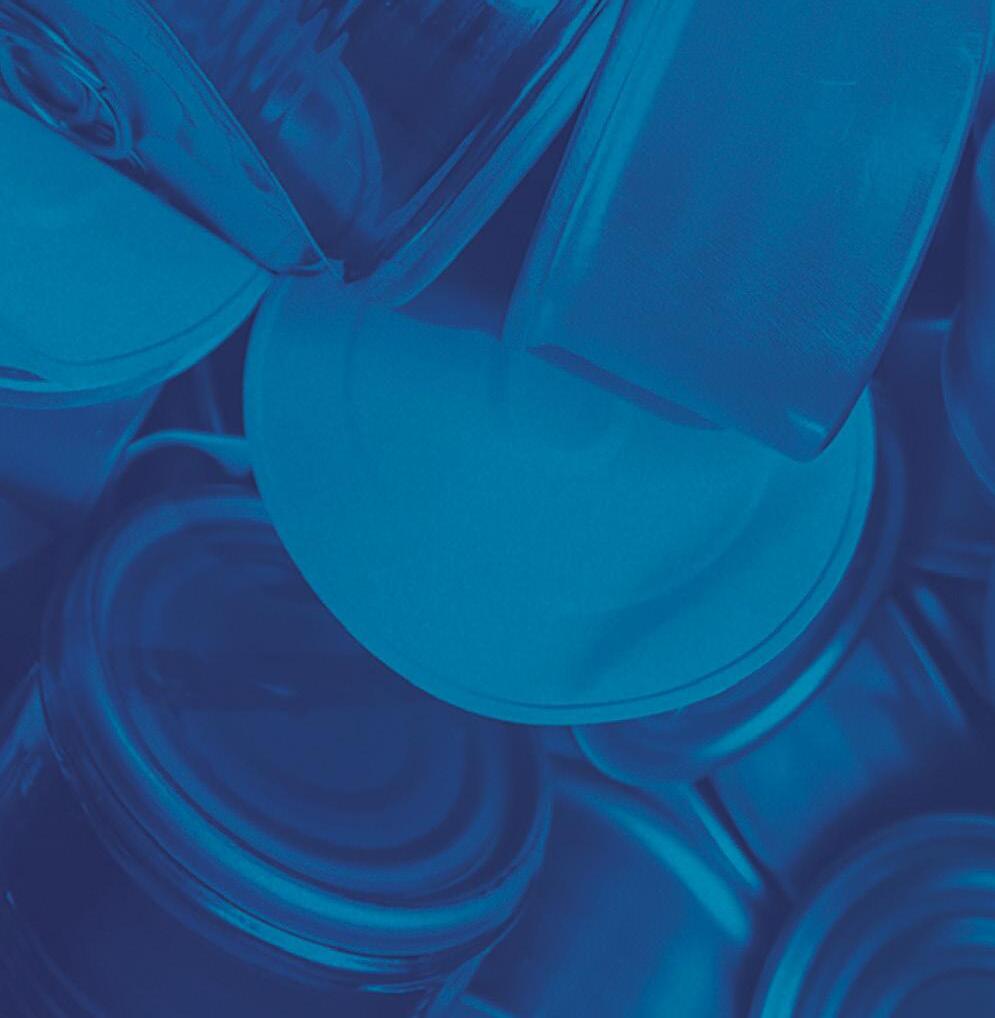


MetPac-SA is dedicated to leading the way in creating a sustainable future by focusing on sustainable metal packaging. As the registered Producer Responsibility Organisation (PRO) with the Department of Forestry, Fisheries, and the Environment for metal packaging, we take our sustainability pledge seriously. Here's how we're doing our part:
• EPR Compliance: We offer our members Extended Producer Responsibility (EPR) legislative and regulatory compliance support whilst they focus on their core business.
• Recycle & Reuse: We promote responsible postconsumer metal packaging collection and recycling of metal packaging across South Africa. This conserves natural resources, reduces the environmental impact and promotes the transition to a circular economy.
• Stakeholder Acceptance: We collaborate with key stakeholders, including the South African Government Department of Forestry, Fisheries and the Environment (DFFE) and the metal packaging industry, to devise solutions that are both environmentally sustainable and acceptable in their form and operation.
At Alliance, we believe that sustainability
Our new R32 Inverter Range is specifically designed to environmental delivering superior cooling and heating performance leader in sustainable HVAC solutions, we provide eco-friendly, future-ready technology suitable for both businesses and homes.
With our commitment to sustainability and innovation, Alliance is shaping the future of HVAC solutions. By choosing Alliance’s R32 Inverter Range, you’re investing in a smarter, more efficient, and environmentally responsible way to stay comfortable. Efficient. Eco-friendly. Future-ready.


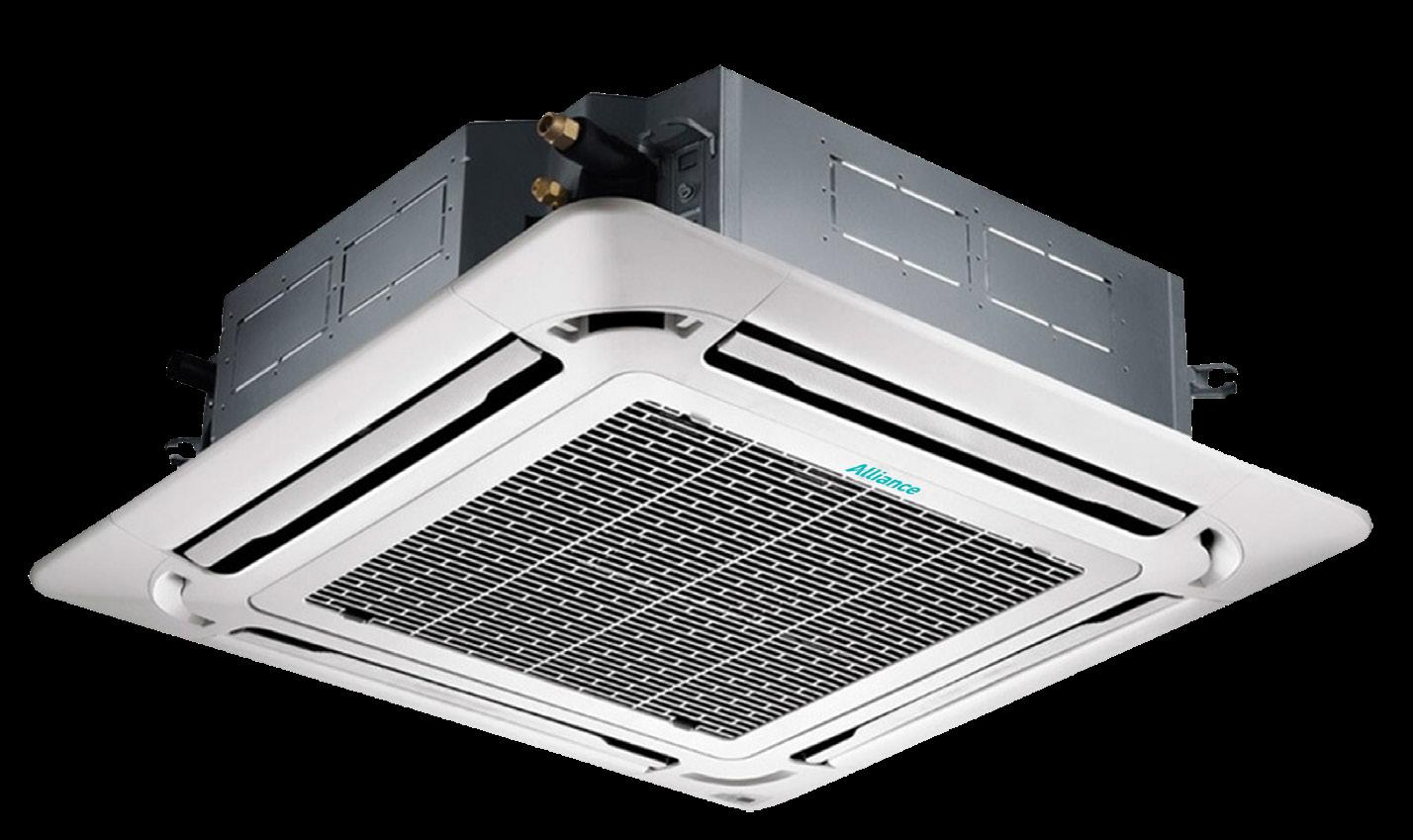

Assured service and technical assistance, thanks to Fourways Group.

www.allianceafrica.co.za




ALLIANCE R32


CASSETTE LIGHT COMMERCIAL INVERTER
ALLIANCE R32 EMERALD ENERGYSAVING MIDWALL
360° airflow for even cooling in commercial spaces.
Sleek, Wi-Fi-enabled, and energy-saving

ALLIANCE R32
EMERALD ENERGYSAVING MIDWALL
ALLIANCE R32 MSP DUCTED LIGHT COMMERCIAL INVERTER
Sleek, Wi-Fi-enabled, and energy-saving
Ultra-quiet with high static pressure for seamless air distribution.

ALLIANCE R32 MSP DUCTED LIGHT COMMERCIAL INVERTER
ALLIANCE R32 UNDERCEILING LIGHT COMMERCIAL INVERTER
Ultra-quiet with high static pressure for seamless air distribution.
Flexible installation with wide-area cooling.
ALLIANCE UNDERCEILING LIGHT COMMERCIAL INVERTER
Flexible installation wide-area cooling.
LOWER ENVIRONMENTAL IMPACT

With a Global Warming Potential (GWP) 675, R32 refrigerant significantly reduces emissions.
LOWER ENVIRONMENTAL IMPACT
SUPERIOR ENERGY EFFICIENCY
SUPERIOR ENERGY EFFICIENCY
FASTER, MORE EFFECTIVE COOLING
FASTER, MORE EFFECTIVE COOLING
With a Global Warming Potential (GWP) 675, R32 refrigerant significantly reduces emissions.
Improves cooling efficiency, reducing power usage, energy costs, and emissions.
Improves cooling efficiency, reducing power usage, energy costs, and emissions.
The R32 range offers improved thermodynamic properties, resulting in faster and more stable cooling.
The R32 range offers improved thermodynamic properties, in faster and more stable
DESIGNED FOR MODERN LIVING
FUTURE-PROOF TECHNOLOGY
FUTURE-PROOF TECHNOLOGY
The R32 Inverter Range uses less refrigerant, has minimal leakage, and reduces environmental impact while maintaining performance.
The R32 Inverter Range uses less refrigerant, has minimal leakage, and reduces environmental impact while maintaining performance.
R32 ensures long-term compliance with evolving global regulations while keeping HVAC systems efficient and future-ready.
R32 ensures long-term compliance with evolving global regulations while keeping HVAC systems efficient and future-ready.
KZN: (031) 579-1895 | (011) 704-6320 | EL: (043) 722-0671
PRETORIA: (012) 643-0445 | KZN: (031) 579-1895 | JHB & CENTRAL: (011) 704-6320 | EL: (043) 722-0671
www.allianceafrica.co.za
CONTACT US: www.allianceafrica.co.za
Construction waste is finding new life in the form of eco-friendly building blocks used for low-cost RDP housing. This innovation is part of the Department of Science, Technology and Innovation’s (DSTI) Circular Economy Demonstration Fund, which supports circular economy projects yet to reach large-scale impact in South Africa.

This milestone was marked on 11 April 2025 by the Council for Scientific and Industrial Research (CSIR), which partnered with Use-It Waste Beneficiation NPC and Key Bricks to demonstrate the prototype.
The DSTI deputy director-general for socio-economic innovation partnerships, Dr Mmboneni Muofhe and CSIR executive manager: hosted programmes, Bongani Memela, presided over the ribboncutting ceremony for the newly built demonstration house.
From waste to walls: The manufacturing process
Guests were hosted on site by the CSIR project manager, Aubrey Muswema; CSIR senior researcher in sustainability economics and waste, Belinda Putterill; and managing director of Use-it and Matt Olivier, chief executive officer for Key Bricks.
Those attending the site visit were guided through the process of manufacturing the innovative building blocks, starting from
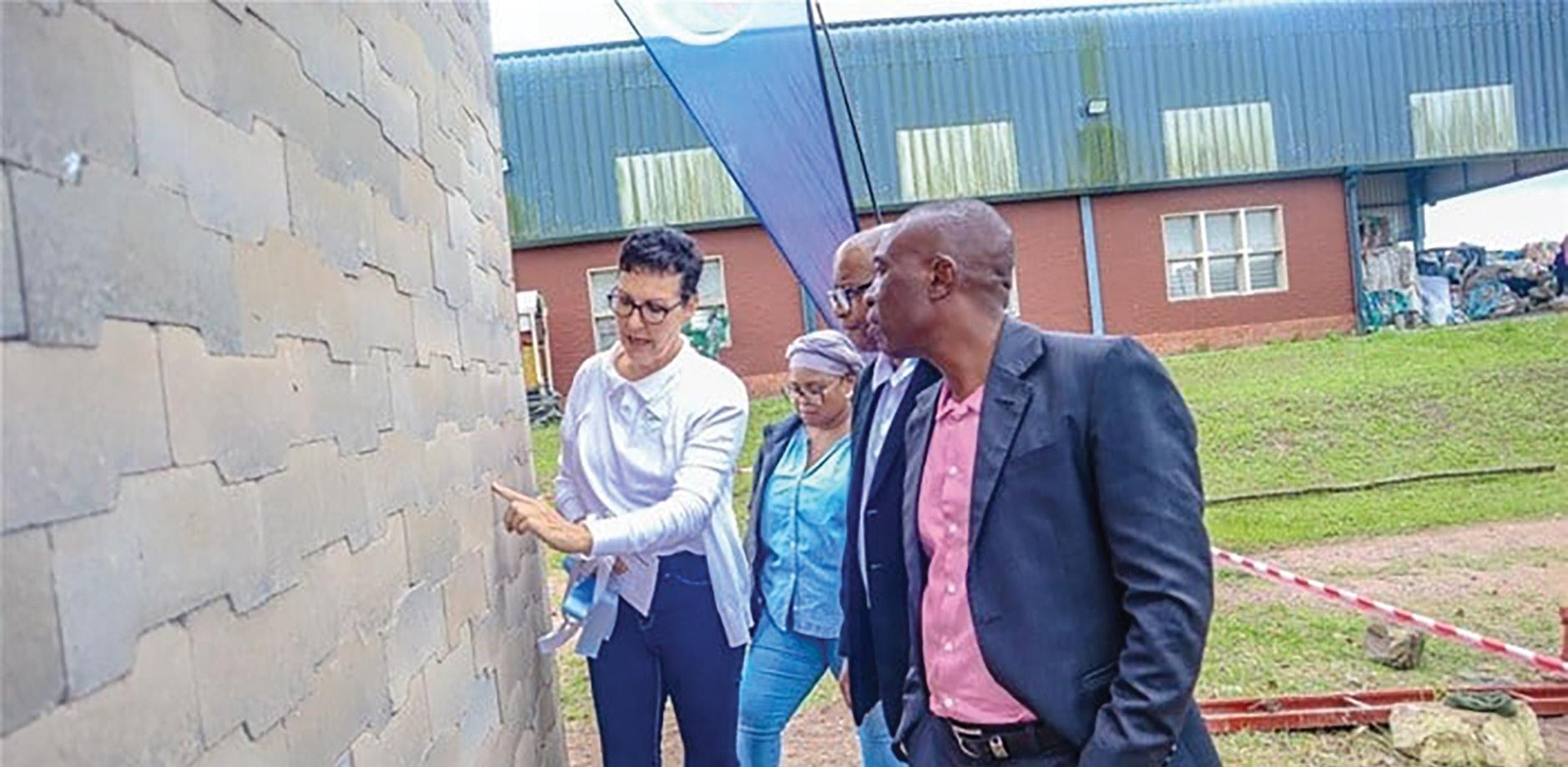
the crushing of waste glass and building rubble, to the finished block, and finally the low-cost housing structure. The site visit provided attendees with behind-the-scenes insights into Key Bricks’ operations, material mix ratios, design of structures and equipment used to produce the interlocking block.
Use-It and Key Bricks both shared their journey on taking steps to become green in their operations and working closely with the CSIR to test and refine the product ideas by adopting circular economy principles.
The green block contains 70% recycled waste content, including crushed waste glass, construction and demolition waste. The block itself is 100% recyclable.
What also sets the interlocking block apart is its design, allowing for the building to be easily constructed with limited building experience, and if needed, the structure can be later deconstructed and the blocks reused at another location.
The block is designed to interlock like Lego blocks, requiring no cement between layers. Each block features internal hollows, which, when stacked, create channels for the installation of electrical and water pipes, reducing the need to cut grooves (also known as ‘chasing’), ensuring that the blocks remain intact. The blocks came from the need to find local markets for waste glass and building rubble in KwaZulu-Natal.
"It’s not viable to transport waste glass from KwaZulu-Natal to Gauteng for recycling, the margins on this are just too slim, resulting in a lot of this waste remaining uncollected and impacting the environment," said Putterill.
"We needed to find ways to use glass locally in KwaZulu-Natal.” Cities, towns and villages across the country are also plagued with the illegal dumping of building rubble in open spaces. These blocks use crushed waste glass and construction and demolition waste, thereby reducing the need for conventional virgin materials.
"Not only is building with this innovative block cost-effective, but it also saves construction time and requires minimal labour and building experience.
"The top structure was put up by relatively unskilled labour from the foundation stage to the roof within seven days – this is only possible because of the interlocking nature of the faceted blocks.
"By using waste as a resource, this interlocking block can unlock new business opportunities in the construction industry. Local businesses and value chains can benefit from the potential to generate additional revenue streams.
"It also has the potential to accelerate social relief efforts by addressing the country’s housing backlog, while helping to keep our cities, towns and villages clean,” says Muswema.
The block-making machine has been demonstrated to the private sector, municipal officials, housing-sector representatives and other SMMEs in the building sector.
Deputy director-general at the DSTI, Dr Mmboneni Muofhe, said: "The work that has been done by all partners to date is commendable in demonstrating the principles of ‘reduce, re-use, recycle’, which in turn compels us to rethink the potential of everything that we use daily.
"South Africans have been practising circular economy principles for years, but they did not necessarily label these practices as such. The creativity and innovative mindset to repurpose singleuse materials has always been there and simply needed to be unlocked systemically and collaboratively.
"The green brick is a testament to how collaboration among multiple actors, such as a science council, small enterprises and government, can deliver a product with social, economic, and environmental benefits. We remain open to the possibility of more partners collaborating with us to demonstrate and scale circular innovations."
"The circular economy holds enormous potential for South Africa," says Professor Linda Godfrey., CSIR principal researcher and manager of Circular Innovation South Africa (CISA).
CISA is tasked by the DSTI to identify and support innovative circular economy demonstration projects through the recently launched Circular Economy Demonstration Fund. “The circular economy studies published by the CSIR highlight that while the circular economy is not new to South Africa, we have not achieved the scale for meaningful impact.
The Circular Economy Demonstration Fund aims to partner universities and science councils with the private sector, to help business and industry demonstrate, de-risk and scale circular innovations, and in so doing, unlock much-needed socio-economic opportunities,” concluded Godfrey. n
Corporate social investment (CSI) is meant to change lives. But what happens when it does the opposite?

More than just quick fixes
By Tshego Bokaba
Across Africa, well-meaning initiatives – designed in boardrooms, backed by big budgets and rolled out with fanfare – have long been positioned as a force for good. But what if, in trying to help, we’re sometimes making things worse? In too many cases, CSI projects miss the mark: fostering dependence instead of empowerment, duplicating efforts already underway, or overlooking the very people they’re meant to serve. As Africa reflects on transformation during Africa Month, it’s time to ask harder questions about how – and why – corporate giving can backfire.
We’ve seen programmes that distribute food parcels without investing in food security, or those that introduce technology into schools without training teachers or ensuring the infrastructure exists to support it. These are not just inefficiencies – they are missed opportunities, and in some cases, they actively disempower communities. This is not to say that CSI is inherently flawed. But when it’s not rooted in context, consultation and co-creation, it can do more harm than good.
Consultation is vital
One of the most common missteps I’ve seen is designing projects for communities rather than with them. Too often, corporates decide what a school, clinic, or neighbourhood needs, without ever speaking to the school governing body, community leaders, or the people who live there. Even the best-resourced interventions can fall flat if they’re out of step with local realities.
In my view, there are five key principles that every CSI practitioner should treat as non-negotiable: research, consultation, co-creation, listening, and partnership. These may sound simple, but they require humility and a willingness to let go of control. Just because we have the resources doesn’t mean we have all the answers.
The result of bypassing this process is often what I call performative CSI: initiatives that look good in a press release but lack any meaningful or lasting impact. It’s when we treat communities like passive recipients instead of equal partners. It’s when we focus on meeting KPIs instead of solving real problems. And it’s when we forget that behind every number in a dashboard is a person with dreams, struggles and potential.
CSI in Africa must be about more than optics. We have a responsibility to confront the inequalities that still define too many lives – children who walk long distances to overcrowded schools, families without access to clinics, young people with no clear path to employment. Real impact means going beyond short-term gestures and investing in solutions that last. It means removing the everyday obstacles that chip away at people’s dignity, potential and hope.
That’s why I believe we need to move toward collaborative, sectorwide approaches. The challenges we face – whether it’s poverty, unemployment, education or access to healthcare – are too layered and too urgent for any one organisation to tackle alone. Corporates, non-profits and government must work together in coordinated, transparent and scalable ways if we’re serious about lasting change.
There are strong signs that the sector is beginning to shift. According to the Next Generation trends and insights research report 2025/2026 on the social, solidarity and impact economies of South Africa, future transformation should focus on improving sector effectiveness, strengthening local organisations, reducing duplication, and encouraging more sustainable, locally driven solutions. This includes enabling organisations to generate their own income and diversify funding models, ensuring they’re not entirely reliant on donor capital.
We also need to build the next generation of leaders: individuals and institutions who are equipped to respond to the rapidly evolving social and economic realities of our continent. Africa’s problems are unique, and our solutions must be too.
This Africa Month, I want to challenge my peers across the CSI and development space to ask harder questions. Not just “How much did we give?” or “How many people did we reach?” but rather, “Who did we speak to?” and “What changed?” and also “What do the communities themselves say they need next?”
Show up with open ears and open minds, not just open wallets. The stakes are too high for us to get this wrong. If we want to be part of the solution, we must be willing to rethink the way we give – and, more importantly, the way we listen. n
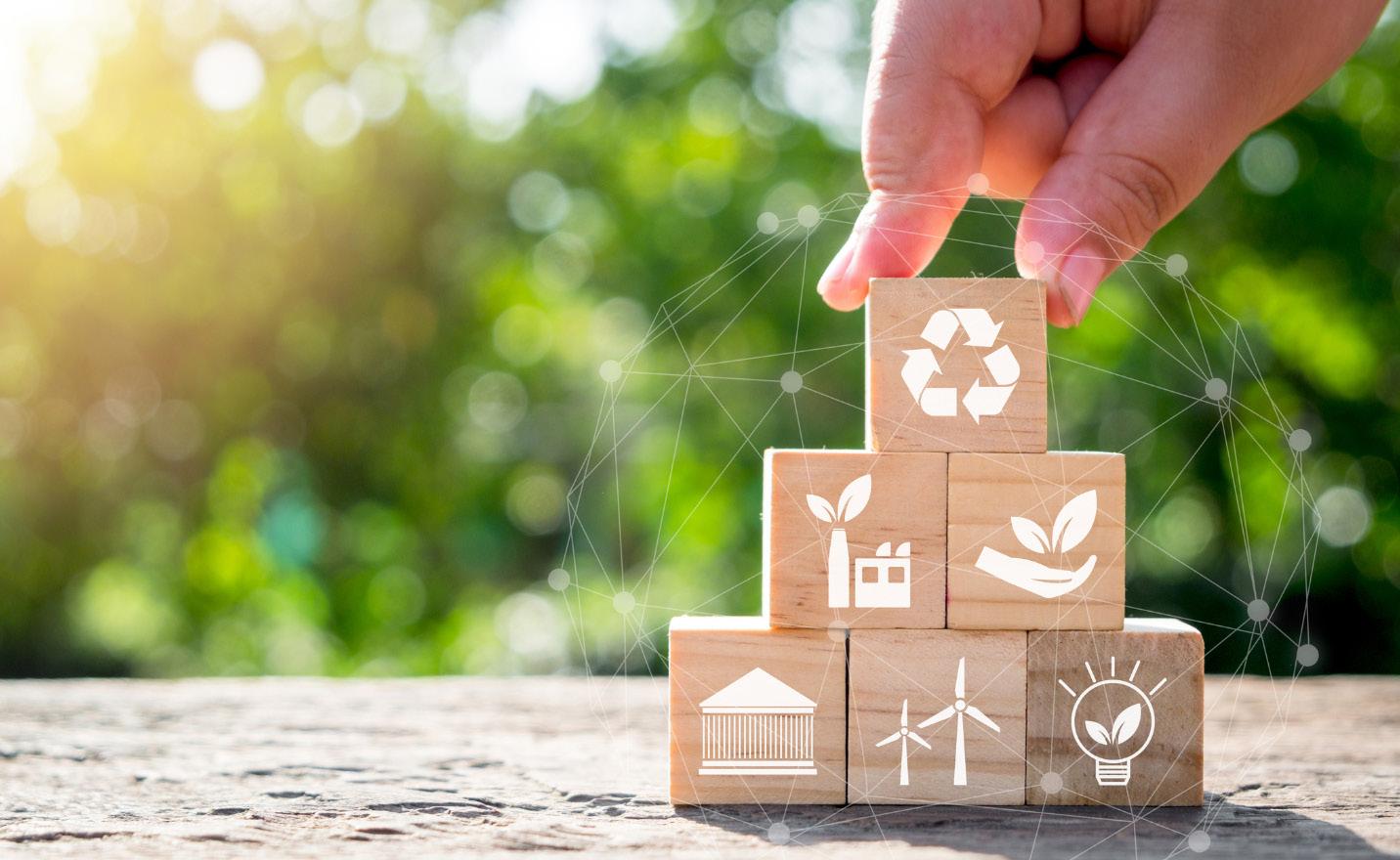

In today's dynamic business environment, Environmental, Social, and Governance (ESG) compliance is no longer optional but essential for long-term success. As investors, stakeholders, and consumers increasingly demand transparency and accountability, aligning with ESG principles is a critical strategy that can enhance a company’s market position, improve operational efficiency, and open doors to new markets prioritising sustainability.
Afroteq, a leading provider of integrated, multi-disciplinary support for the built environment, facilities and property sectors, stands at the forefront of assisting businesses in navigating the complexities of ESG compliance. With their multi-disciplinary team offering deep expertise and comprehensive solutions, Afroteq empowers organisations to develop and implement robust ESG frameworks that not only ensure regulatory compliance, but also drive sustainable growth and value creation.
ISO 14001:2015 Certification: A Commitment to Environmental Excellence
Afroteq’s professional and advisory services include project, programme and asset management; property research and consultancy; quantity surveying; occupational health and safety; environmental management and training. A cornerstone of Afroteq's environmental commitment is its attainment of ISO 14001:2015 certification, a globally recognised standard for Environmental Management Systems (EMS). This certification underscores Afroteq’s dedication to continuous improvement and sustainability.
Viann Eben Nel, (Regional Health and Safety Manager serving as Environmental Officer) within Afroteq’s Health, Safety and Environmental Management Services division, highlights the significance of this achievement: "Our ISO 14001:2015 certification reflects our unwavering commitment to sustainable business practices. It provides our clients with confidence that we operate under internationally recognised environmental management standards, helping them achieve their ESG goals more effectively."
Facility managers play a pivotal role in ESG compliance by implementing sustainable initiatives within organisations. Their responsibilities extend beyond traditional operations to include:
• Carbon Emissions Reduction: Developing and executing strategies to lower emissions and progress towards the 2030 sustainability goals.
• Energy Efficiency: Implementing smart energy solutions and reducing energy consumption.
• Water Reuse and Waste Management: Introducing sustainable water management practices and waste reduction strategies to minimise environmental impact.
• Technology Integration: Leveraging cutting-edge technologies such as IoT and data analytics to monitor and optimise environmental performance.
“At Afroteq we are able to provide tailored solutions to each business, guiding their strategy and implementing the necessary tools and support to align with ESG objectives to achieve environmentally responsible operations,” Viann says.
One of the most critical aspects of ESG compliance is ensuring that a business's value propositions align with sustainability goals. Afroteq helps companies demonstrate their commitment to environmental sustainability, social responsibility and good governance. This is done by conducting ESG gap assessments and developing action plans; establishing clear sustainability goals and reporting frameworks and ensuring that suppliers and partners adhere to sustainable practices, extending ESG efforts beyond their own operations.
“We have a team of highly skilled professionals who are committed to delivering exceptional solutions that comply with industry-related regulations while assisting clients in achieving their environmental goals and reducing their carbon footprint. A key component of our environmental services is the compilation of Environmental Conditions Assessments, complemented by an Environmental Impact and Aspect Register,” Viann says.
Highlighting the benefits of these service offerings, Viann explains that the Conditions Assessment provides a comprehensive analysis of a building's current state and operations, ensuring compliance
with environmental legislation and a commitment to the PolluterPays-Principle (PPP). Meanwhile, the Impact and Aspect Register identifies both current and historical environmental aspects that could affect the natural environment and ecosystem.
“We are proud to say that our services offer essential support to clients, confirming they meet necessary environmental regulations while driving sustainability and operational excellence. However, it is also important to remember that a truly sustainable business extends its ESG efforts across the entire supply chain. At Afroteq we assist our clients in integrating ESG principles into procurement and supplier management, thereby fostering responsible sourcing practices,” he says.
As businesses strive to meet global sustainability targets, Afroteq remains committed to supporting them in:
• Reducing carbon emissions in line with international targets.
• Adopting circular economy practices that promote resource efficiency.
• Investing in renewable energy sources and sustainable innovations.
ESG compliance is a strategic imperative for businesses seeking to thrive in an increasingly sustainability-conscious world. With Afroteq's expertise, companies can seamlessly align their operations with ESG principles, ensuring regulatory compliance, operational efficiency, and long-term value creation. Whether through environmental impact assessments (EIA), ISO 14001:2015 certification, or comprehensive ESG strategy development, Afroteq is the ideal partner in driving a greener and more responsible future.
For more information visit www.afroteq.co.za

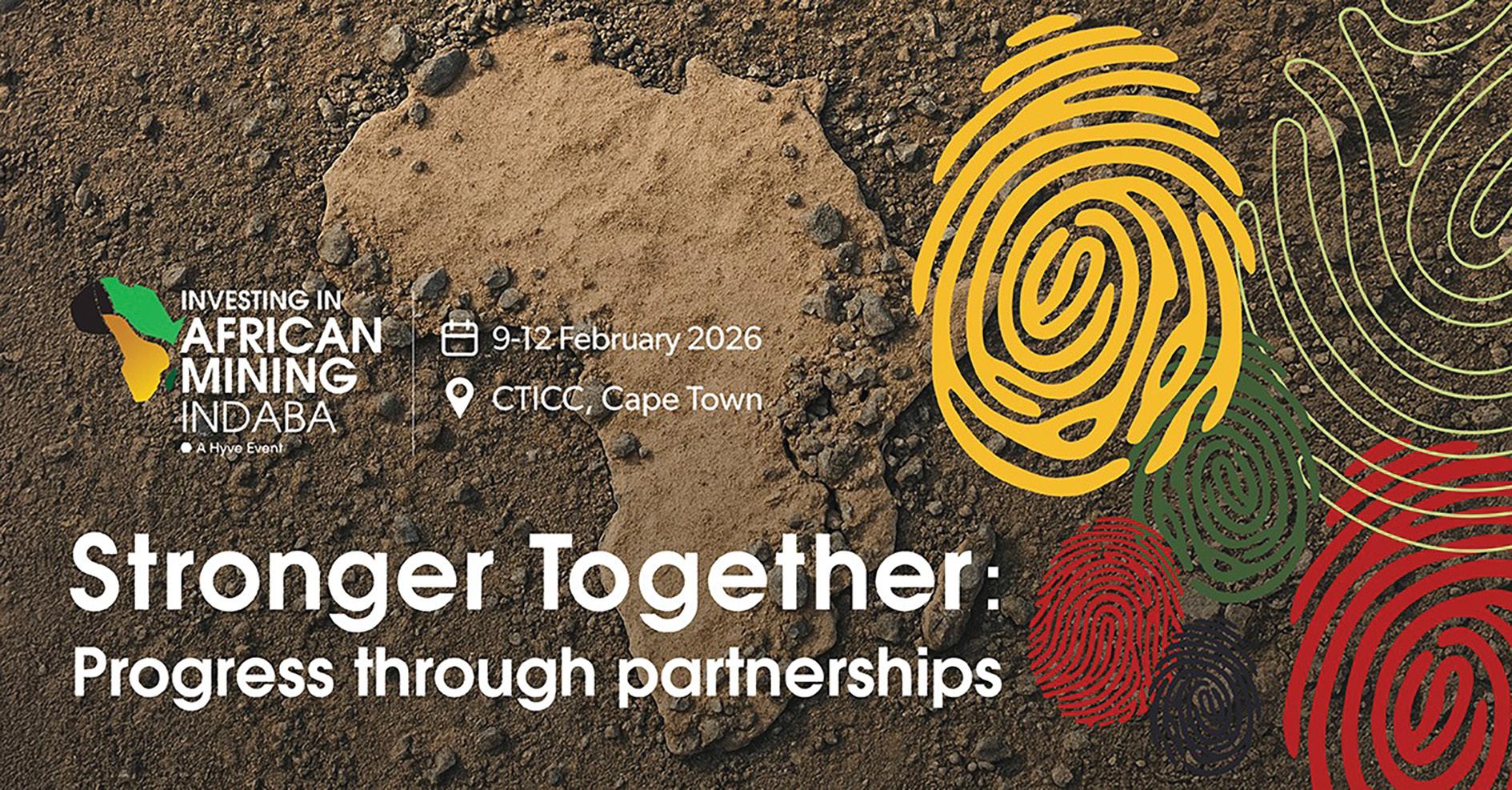
The Investing in African Mining Indaba (MI26), Africa’s most influential and transformative platform for mining leadership, investment, and innovation, has announced its 2026 theme, “Stronger together: Progress through partnerships.” This bold direction reflects the urgent need for collaboration across the continent to fast-track untapped growth opportunities across the entire mining value chain and unlock downstream industrialisation industries.
With the world’s transition to clean energy accelerating, Africa stands at a crossroads. The continent holds approximately 55% of global cobalt reserves, with the DRC producing 70% of the world’s supply, nearly half of global manganese reserves, and an estimated 90% of platinum group metals, making Africa indispensable to the global energy transition.
Demand for critical minerals is surging, which Mining Indaba defines as those materials needed to industrialise and fuel African economies. But realising this opportunity requires visionary partnerships that align diverse interests and deliver inclusive, equitable progress. The correct choices made today will ensure Africa leads the next era of sustainable mining development.
“The Mining Indaba 2026 theme resonates with the South African philosophy of Ubuntu, which values humanness and unity. When we work together as stakeholders, we can shape industries for the betterment of all, including the environment. Together, we can build the future now,” says Frans Baleni, Chairman, Executive Advisory Board, Investing in African Mining Indaba.
This is echoed by Gwede Mantashe, Minister of Mineral and Petroleum Resources, South Africa. “Our strength lies in building partnerships that recognise the mutual value of investment. At the Department of Mineral and Petroleum Resources, we understand that investors seek returns, and rightly so, but we are equally committed to ensuring that the benefits of growth and development are shared with workers, communities, and the country at large. Progress is only meaningful when it lifts all stakeholders,” he says.
Mzila Mthenjane, CEO, Minerals Council South Africa, believes the South African mining sector is poised for growth, but its impact is amplified when working in partnership with government and other social partners. “Together, we can enable the investment and development of key infrastructure that supports livelihoods and economic growth,” he adds.
• Community engagement and indigenous voices Genuine partnerships with local and indigenous communities ensure equitable benefits, while preserving cultural heritage and environmental integrity.
• Critical minerals Africa’s mineral wealth positions it as a leading provider of inputs for the technology sector, as well the renewable-energy industries.
• Disruptive technologies Innovations like AI and green-energy technology are transforming mining into a smarter, more environmentally sustainable and resilient industry.
• Downstream buyers The industries that drive demand for minerals – automakers, renewables, manufacturers etc – are major stakeholders in the sector, and have valuable perspectives to share.
• Governance, regulation and policy Harmonised regulations and intra-African collaboration create stability and attract investment to unlock the continent’s mining potential.
• Infrastructure and industrialisation Strengthening transport and energy networks enables local beneficiation and transforms Africa into a hub for value-added manufacturing.
• Investment and economic growth Strategic collaborations between governments, investors, and mining companies drive sustainable development and unlock Africa’s mineral wealth.
• The just energy transition Building a new energy dispensation that slows emissions and halts climate change will require a range of critical minerals, which means new partnerships in the mining sector.
• Leadership and visionary thinking Clear-eyed leaders are essential to fostering resilience, driving innovation, and positioning Africa as a global mining powerhouse.
• Sustainability The mining sector will provide the materials for a more sustainable world, while also evolving its operations to manage its own impact on the natural and social environment.
“This year’s theme reflects our commitment to fostering partnerships that not only drive investment but also ensure shared prosperity for all stakeholders. Mining Indaba is the platform where transformative ideas and collaborations come to life, showcasing joint ventures, public-private partnerships, community-driven initiatives, and disruptive technology adoption that demonstrates how collaboration can unlock opportunities and overcome challenges,” says Laura Nicholson, Content and Communities Director, Mining Indaba.
Investing in African Mining Indaba 2026 has introduced a refreshed visual identity inspired by the event’s core theme. The new fingerprint motif symbolises how unique individuals and organisations, when united, can make a powerful, lasting mark on the industry. Just as overlapping fingerprints form a seamless imprint, so too do strong partnerships.
The 2026 Mining Indaba, taking place from 9–12 February 2026 at the Cape Town International Convention Centre, will convene governments, mining companies, investors, downstream industries, communities, and leading service providers to forge the partnerships needed for a prosperous, resilient future.
Register today to secure your place among Africa’s mining leaders and global investors. Be part of the movement driving sustainable progress and make your mark on the future of African mining. Visit https://miningindaba.com to learn more and join the conversation.
#MI26StrongerTogether #MakeYourMark #MI26
“The theme ‘Stronger together: Progress through partnerships’ is a call to reimagine partnerships in Africa’s journey towards minerals for inclusive prosperity, not as tools of convenience, but as instruments of collective empowerment. It’s a reminder that Africa’s transformation through minerals can only be achieved when we all, especially women, youth, marginalised communities, artisanal and smallscale miners, governments, industry, civil society, academia, cooperating partners, sit at the table as equal partners. Through bold partnerships and a commitment to equity, we can rewrite the story of our mineral wealth, not as a curse, but as a catalyst for justice, prosperity, and dignity for all Africans. Stronger together, we rise,” Dr Marit Kitaw, Economic Affairs Officer, United Nations Economic Commission for Africa, and Mining Indaba Executive Advisory Board
“Stronger together: Progress through partnerships means uniting governments, private sector, communities, and civil society in a powerful and enduring partnership that will transform mining into a shared triumph for Africa's future,” Kwasi Ampofo, Head of Mining and Metals, BloombergNEF and Mining Indaba Executive Advisory Board
“We can no longer operate as before. Neither bulk exports of unrefined ore nor export bans are durable solutions. Rather, the industry has to pivot toward practices that provide more value and technology transfer in African nations. This transition will be aided by the introduction of more nimble and economically viable refining technologies and the provision of supportive infrastructure undertaken via public-private partnerships,” Tony Carroll, Mining Indaba Executive Advisory Board


Replacing refrigerant with water between HBC and indoor units


